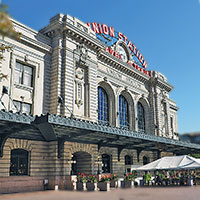 |
Amtrak Great Stations Denver, Colorado |

Denver, CO / May 2023 / RWH

Denver Union Station
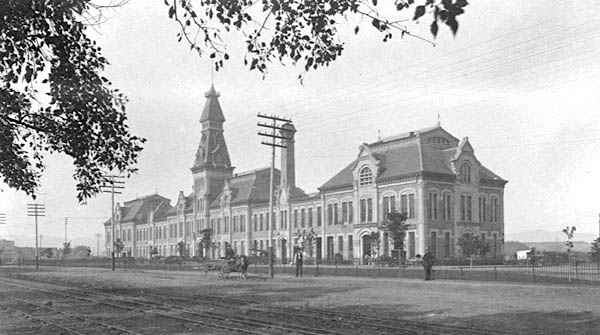
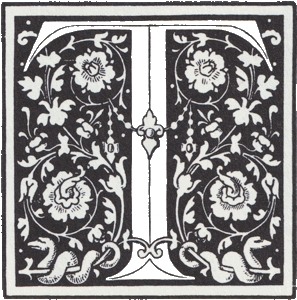 he first Union Station was built in 1881 at a cost of $525,000 to serve the Denver and Rio Grande; Denver, South Park and Pacific; Colorado Central; and Union Pacific railroads, which had previously maintained separate facilities. In 1894, the building, constructed of pink-grey rhyolite with pink sandstone trim, was seriously damaged by fire. Although the wings were renovated, the central portion of the station was rebuilt in a more fashionable Romanesque style with a tall clock tower. Van Brunt and Howe, a well-regarded Kansas City architecture firm, completed the work. Due to an increase in passenger rail traffic, the station was expanded twenty years later by once again replacing the center block.
he first Union Station was built in 1881 at a cost of $525,000 to serve the Denver and Rio Grande; Denver, South Park and Pacific; Colorado Central; and Union Pacific railroads, which had previously maintained separate facilities. In 1894, the building, constructed of pink-grey rhyolite with pink sandstone trim, was seriously damaged by fire. Although the wings were renovated, the central portion of the station was rebuilt in a more fashionable Romanesque style with a tall clock tower. Van Brunt and Howe, a well-regarded Kansas City architecture firm, completed the work. Due to an increase in passenger rail traffic, the station was expanded twenty years later by once again replacing the center block.
The new section, completed in 1914, was designed in a grand neoclassical style by the Denver firm of Gove and Walsh. The architects clad the structure's steel frame with rusticated and richly carved Colorado granite. A metal and glass marquee at the first floor protects passengers from inclement weather.
On the street and track facades, central recesses hold trios of two-story round arch windows flanked by end pavilions. The arches are embellished with scalloped designs and keystones in the form of scrolls with shields. The pavilions have central niches with decorative plaques bearing the dates "1881" and "1914" to mark the construction of the station's two major sections.
 Above the prominent cornice there are clocks on the two main facades for travelers who need to keep the train schedule in mind. Orange neon signs were later added over the clocks, proclaiming "Union Station — Travel by Train"; with time, they have become neighborhood landmarks in their own right. Inside, the large windows flood the old waiting room, now the hotel lobby, with natural light. Looking closely, one sees that the windows' plaster arches bear approximately 2,300 carved columbine flowers—Colorado's official state flower.
Above the prominent cornice there are clocks on the two main facades for travelers who need to keep the train schedule in mind. Orange neon signs were later added over the clocks, proclaiming "Union Station — Travel by Train"; with time, they have become neighborhood landmarks in their own right. Inside, the large windows flood the old waiting room, now the hotel lobby, with natural light. Looking closely, one sees that the windows' plaster arches bear approximately 2,300 carved columbine flowers—Colorado's official state flower.
Amtrak returned to historic Denver Union Station in time for the evening arrival of the eastbound California Zephyr on Friday, February 28, 2014. Three years earlier, Amtrak moved to a nearby temporary facility to accommodate the renovation of Union Station, excavation of an underground bus concourse and construction of a new Train Hall containing tracks and platforms to be used by Amtrak and the future commuter rail system. The Train Hall, just west of the historic building, features a soaring white fabric roof with curving forms; lighted from within at night, it becomes a glowing Lower Downtown landmark.
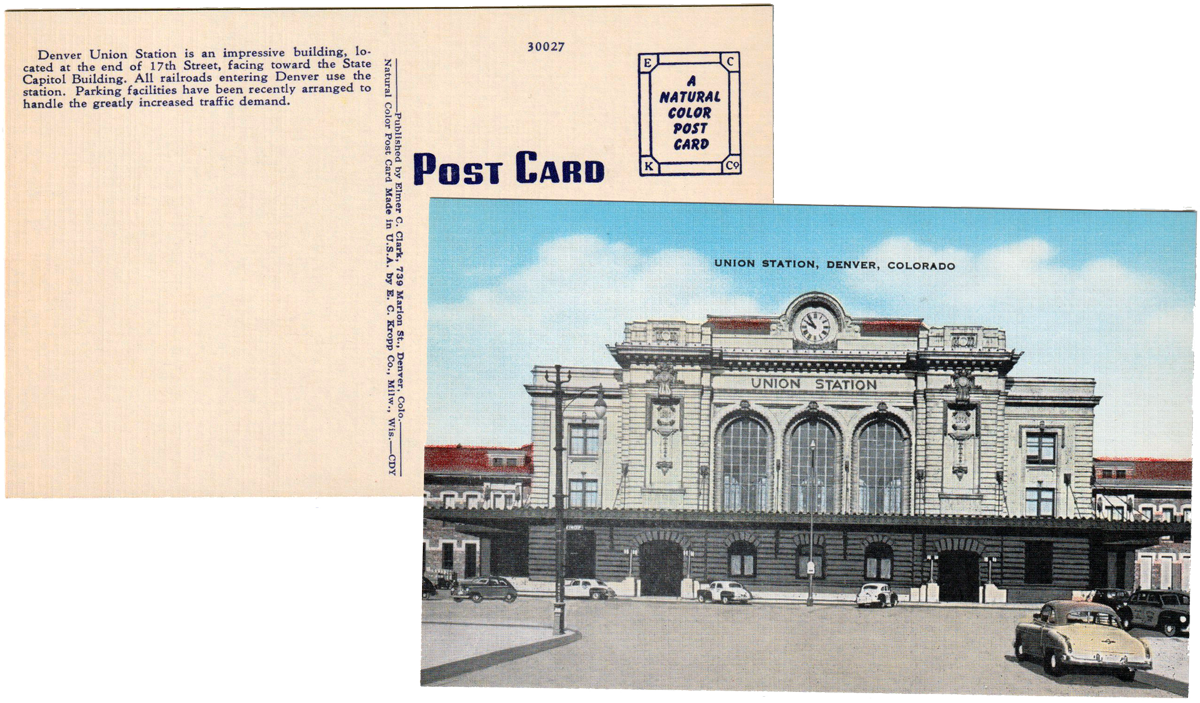
postcard / collection

See also our complete Amtrak California Zephyr route scrapbook in Mainlines
Exterior

Denver, Co / May 2023 / RWH

Click to see the Denver Union Station area plotted on a Google Maps page
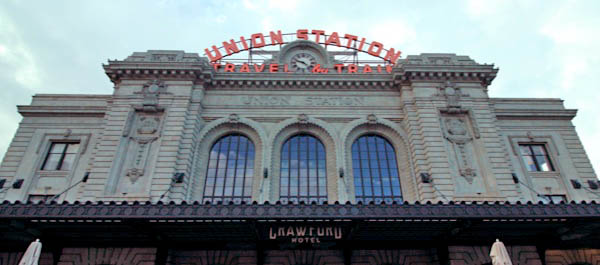
May 2023 / RWH
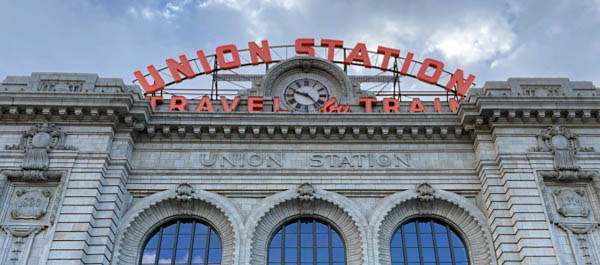
May 2023 / RWH
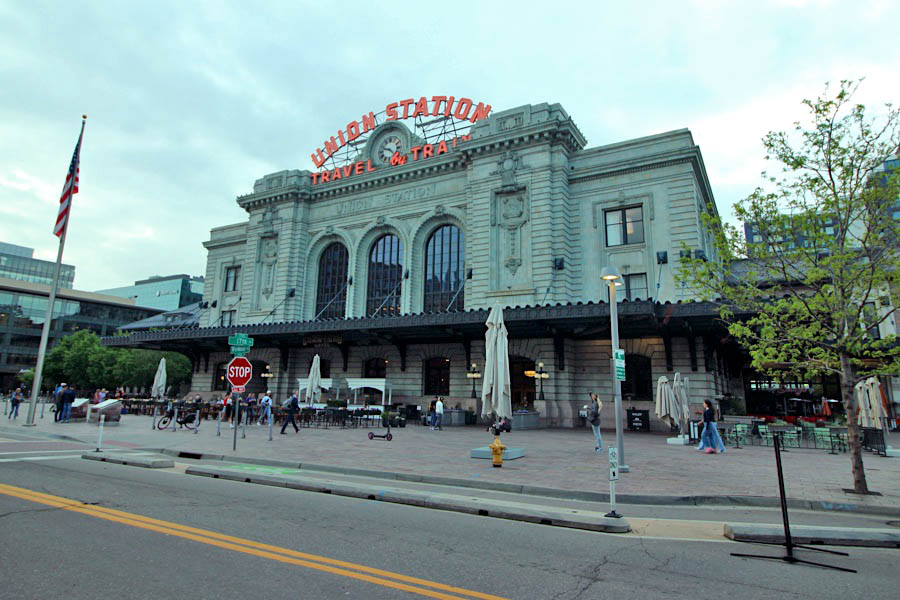
Denver, Co / May 2023 / RWH
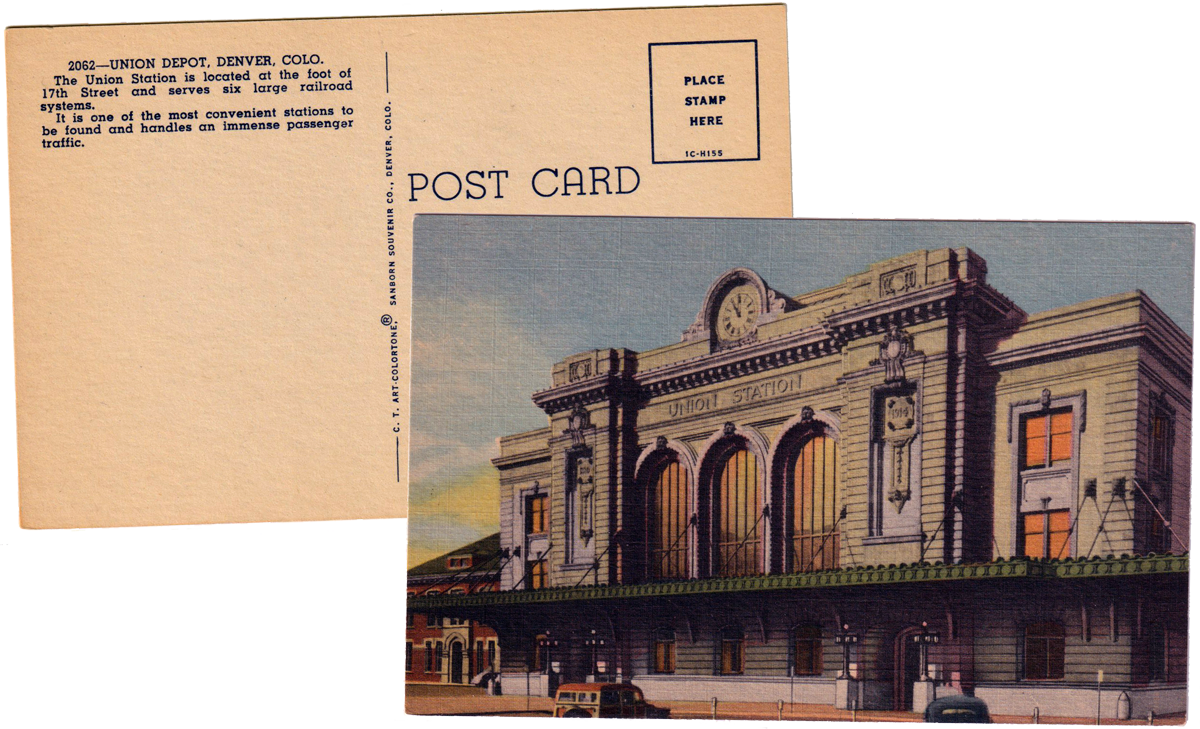
postcard / collection
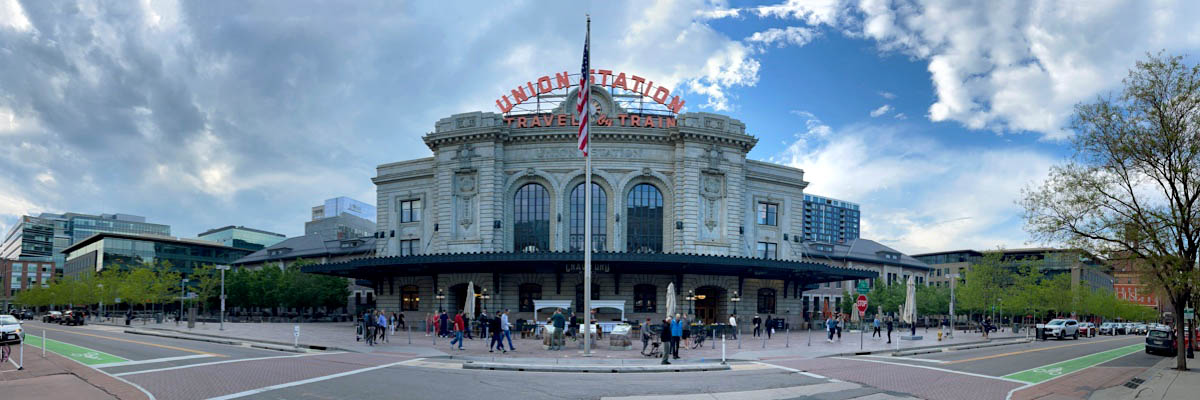
Denver, Co / May 2023 / RWH
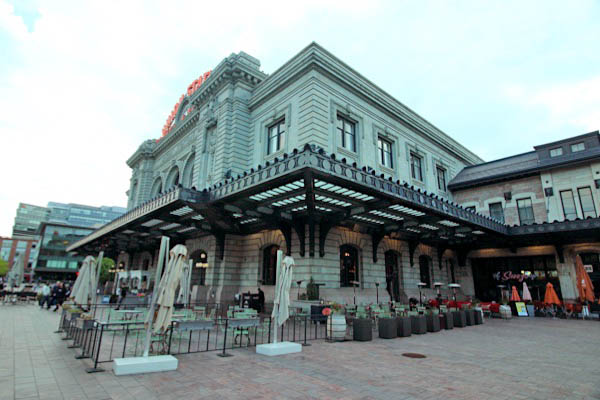
Denver, Co / May 2023 / RWH

Denver, Co / May 2023 / RWH
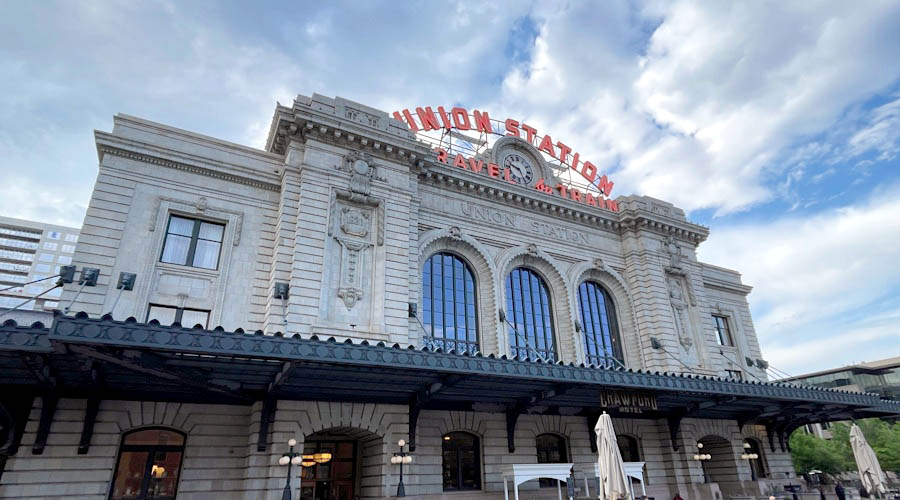
Denver, Co / May 2023 / RWH
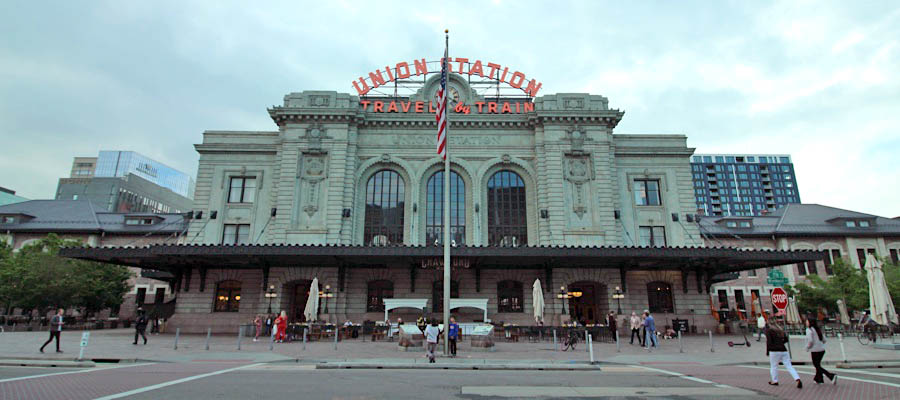
Denver, Co / May 2023 / RWH
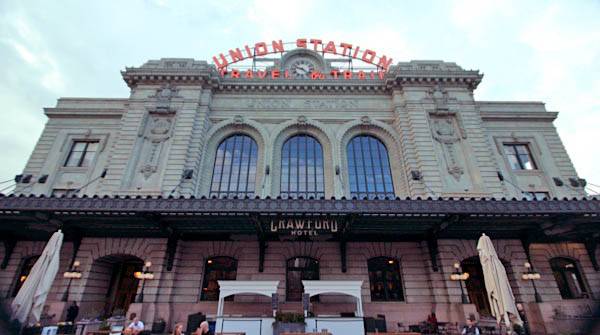
Denver, Co / May 2023 / RWH
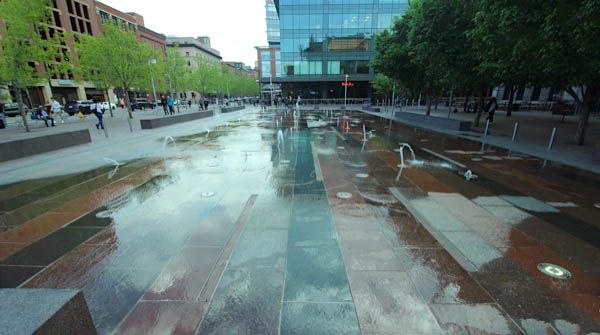
Denver, Co / May 2023 / RWH
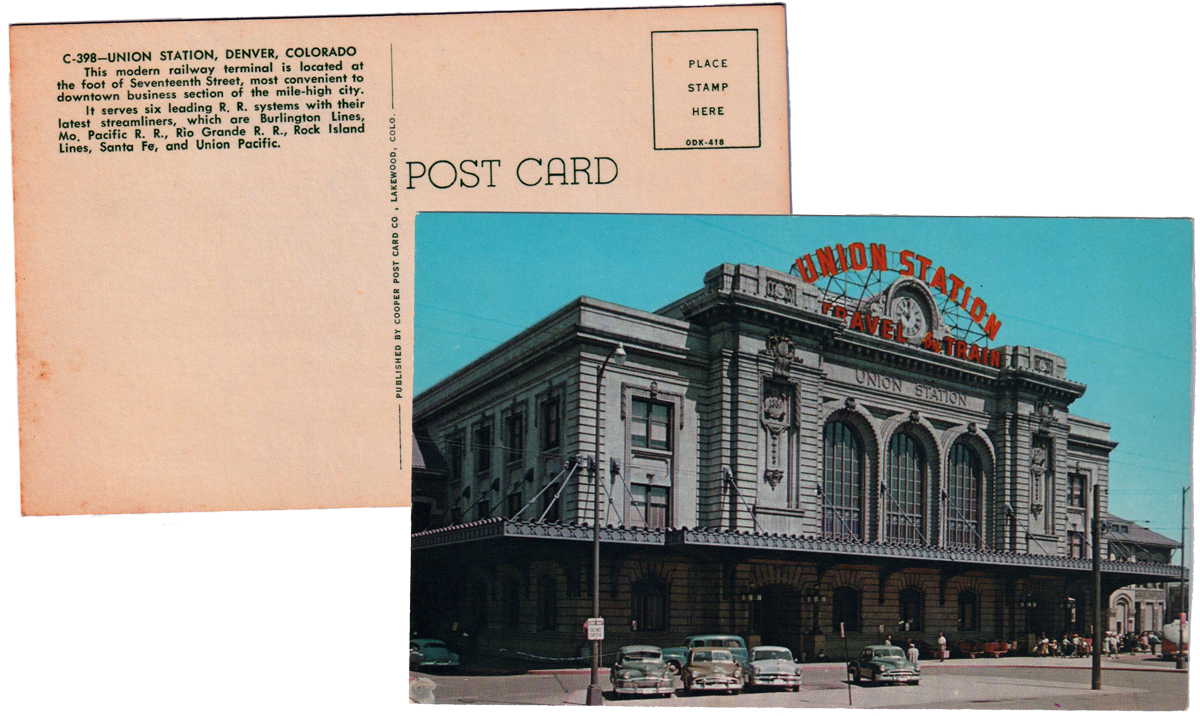
postcard / collection

Sit back, relax and take in the view inside one of Denver's most iconic historic landmarks, Denver Union Station. Located in the heart of downtown Denver, the renovated 1914 Beaux-Arts train station is home to 10 chef-owned restaurants and bars, boutiques, and the 112-room Crawford Hotel.
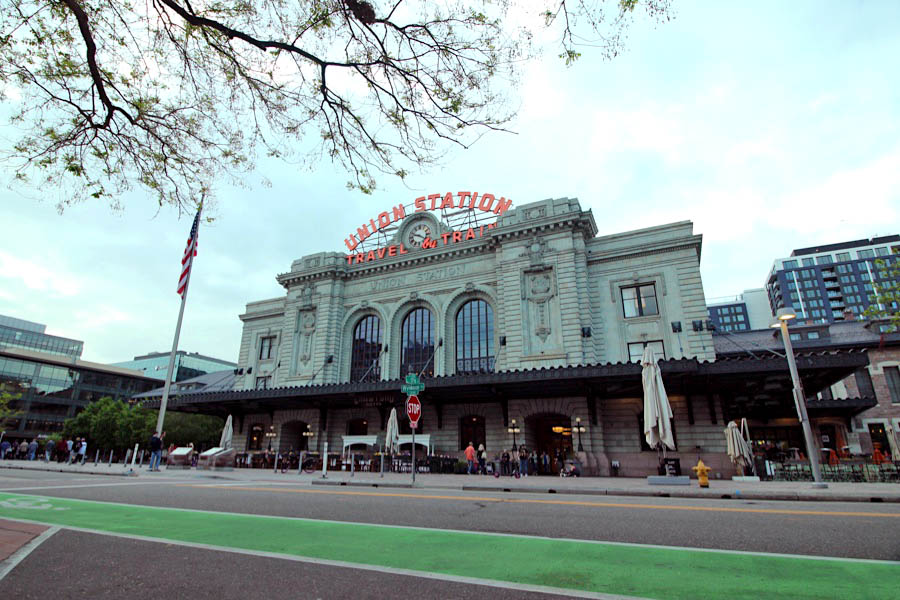
Denver, Co / May 2023 / RWH
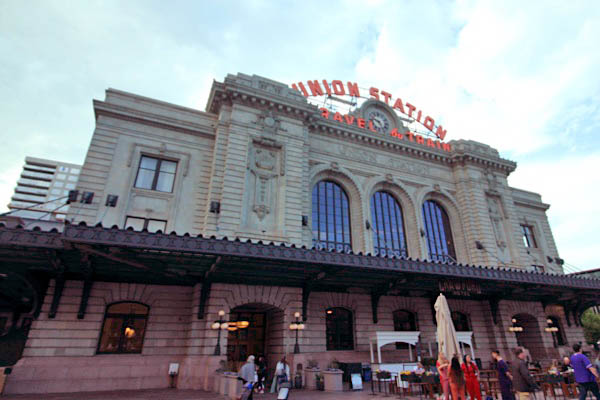
May 2023 / RWH
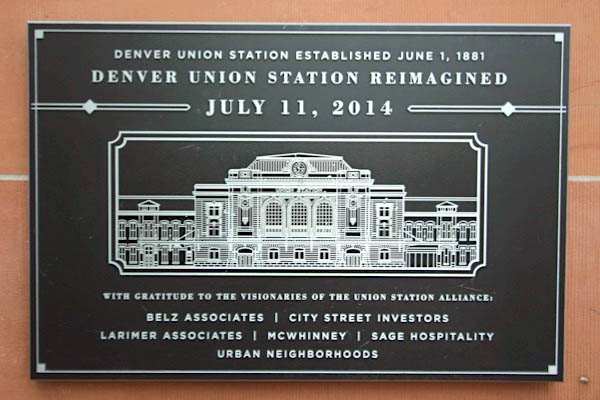
May 2023 / RWH

Where the Mountains Meet the Trains
artwork by Barbara Froula / collection
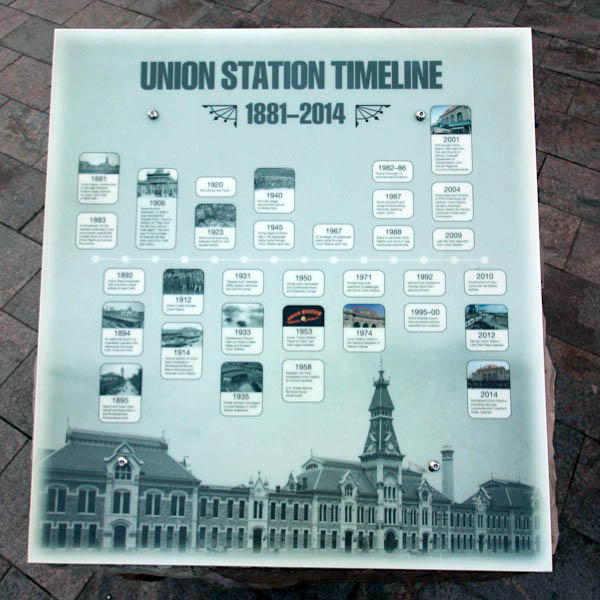
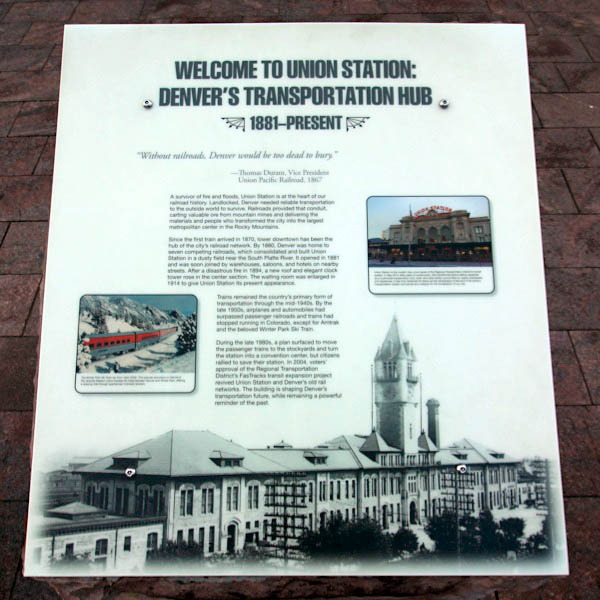

May 2023 / RWH
Interior

May 2023 / RWH

May 2023 / RWH
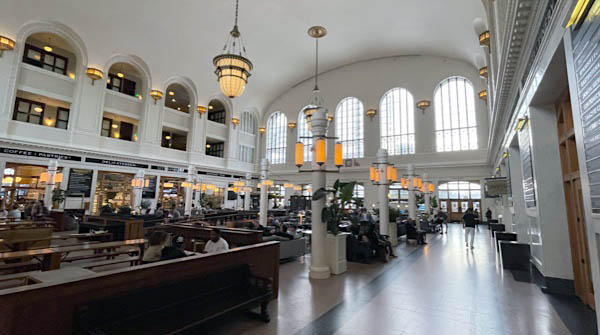
May 2023 / RWH
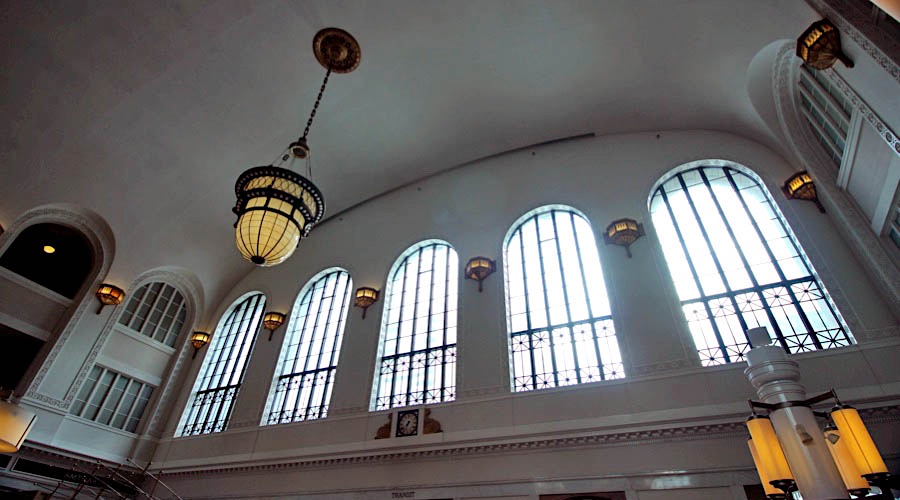
May 2023 / RWH
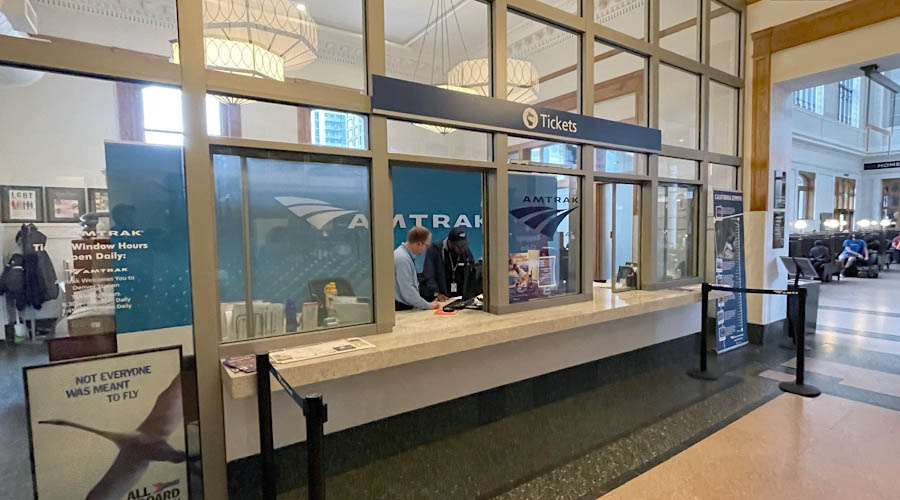
May 2023 / RWH
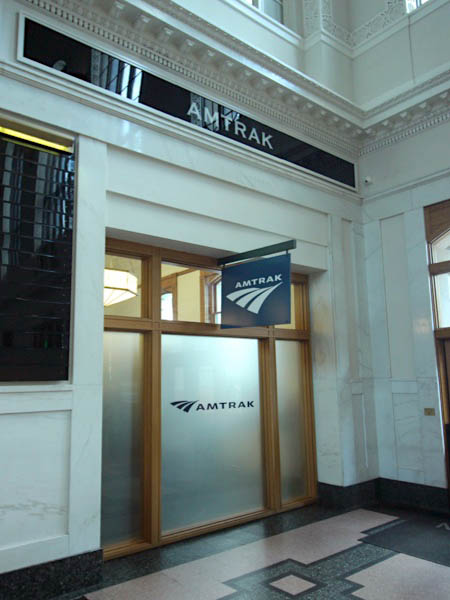
May 2023 / RWH
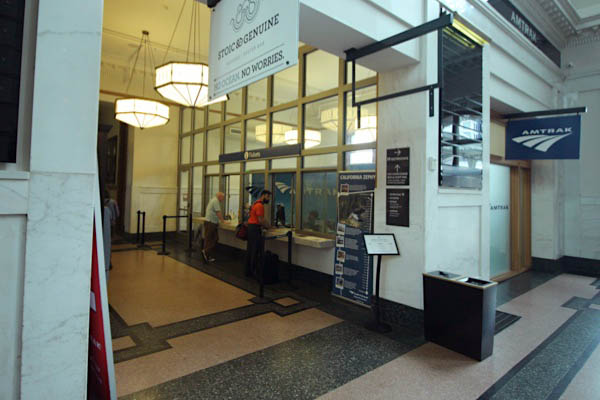
May 2023 / RWH
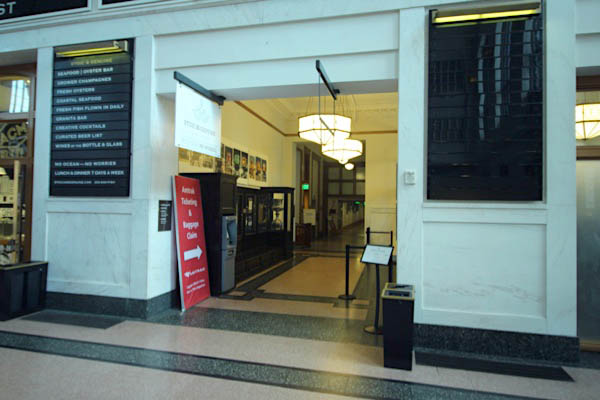
May 2023 / RWH

A Century and a Half in the Making
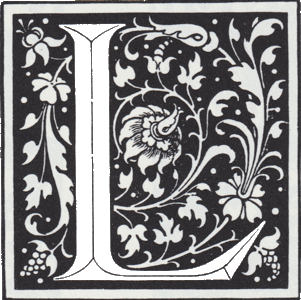 ike so many ambitious ventures before it, Denver Union Station began as a dream.
In the late 19th century, train travel had opened up the West to untold numbers, eager to build a life for themselves on this bold new frontier. With this in mind, the city planners of Denver began designs on a new station that could capitalize on the strong demand for train travel and serve as a gateway to their growing city.
ike so many ambitious ventures before it, Denver Union Station began as a dream.
In the late 19th century, train travel had opened up the West to untold numbers, eager to build a life for themselves on this bold new frontier. With this in mind, the city planners of Denver began designs on a new station that could capitalize on the strong demand for train travel and serve as a gateway to their growing city.
On June 1, 1881, their bold vision was realized as the new Denver Union Depot opened its doors. Spanning 500 feet and adorned with a 180-foot clock tower at its center, the station held the distinction of being the tallest building in the West in its day.
It stood for less than three years. On March 18, 1894, an electrical fire consumed the station, destroying the central hall and iconic clock tower. Though the Depot was quickly rebuilt, its replacement, too, was short-lived. In the span of two short decades, the city found it had outgrown the now comparatively modest structure, and work began on a grand new vision for this reimagined gateway to the Mile High City.
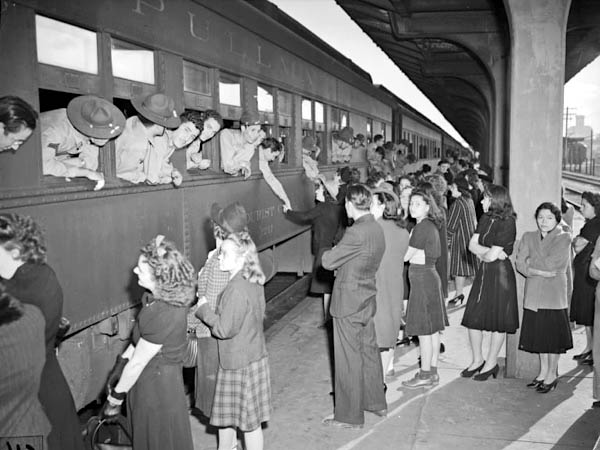 Built from carved granite in the imposing Beaux-Arts style, the newly christened Denver Union Station at last opened its doors in 1914. Since then, it has played host to an impressive roster of notable dignitaries, from Queen Marie of Romania to Presidents Theodore Roosevelt, William Howard Taft, and Franklin Delano Roosevelt. The Station reached its zenith in the mid-1940s, welcoming more than 50,000 visitors daily, including many U.S. service members and their loved ones during the Second World War.
Built from carved granite in the imposing Beaux-Arts style, the newly christened Denver Union Station at last opened its doors in 1914. Since then, it has played host to an impressive roster of notable dignitaries, from Queen Marie of Romania to Presidents Theodore Roosevelt, William Howard Taft, and Franklin Delano Roosevelt. The Station reached its zenith in the mid-1940s, welcoming more than 50,000 visitors daily, including many U.S. service members and their loved ones during the Second World War.
With the waning popularity of train travel in the latter half of the 20th century, the Station gradually fell into disuse. In 2001, efforts began in earnest to revitalize the once-great landmark of historic Lower Downtown, culminating in a grand reopening of the reimagined Denver Union Station as a shopping, dining, and cultural destination in 2014 — precisely one hundred years after the opening of the rebuilt structure.

May 2023 / RWH

May 2023 / RWH
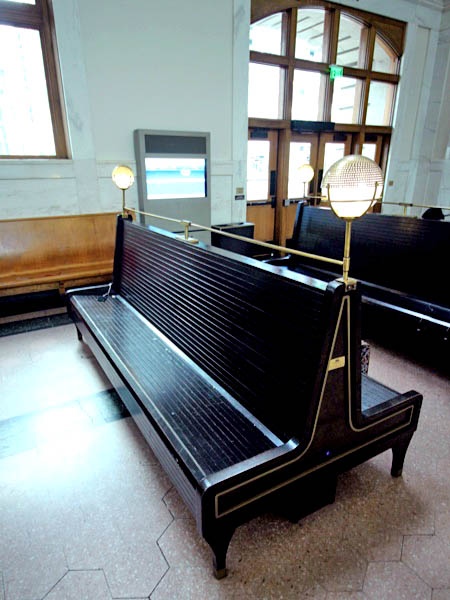
May 2023 / RWH

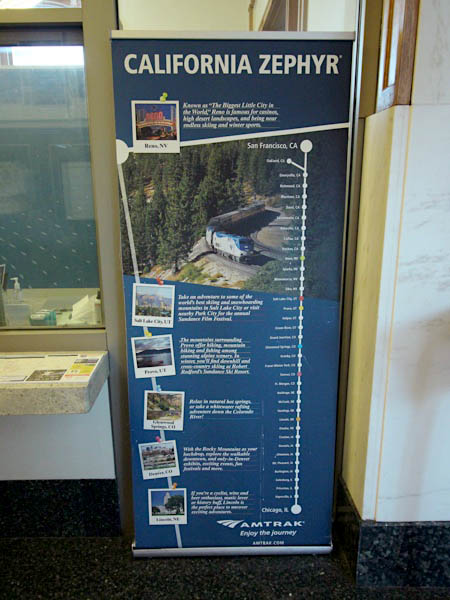
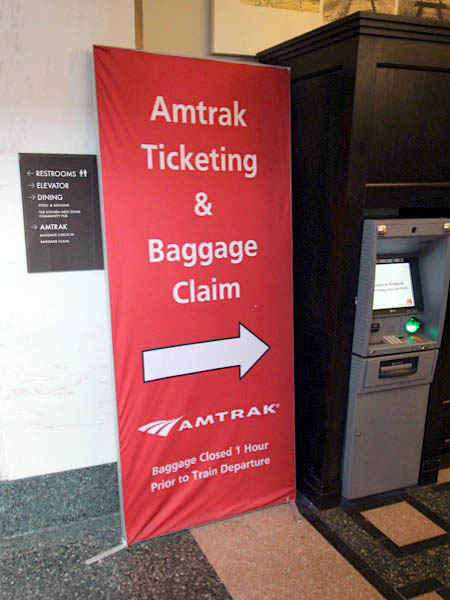
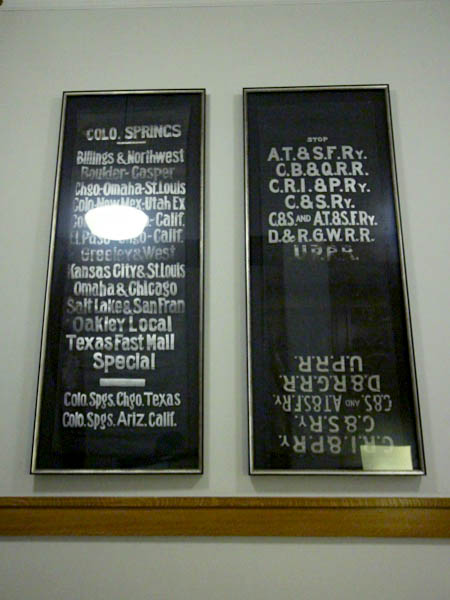
May 2023 / RWH

May 2023 / RWH
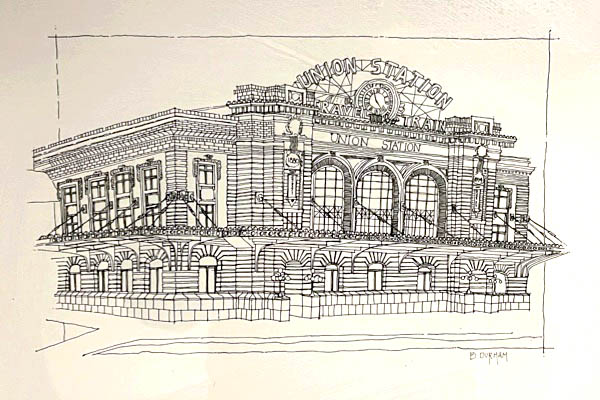
May 2023 / RWH

May 2023 / RWH

May 2023 / RWH
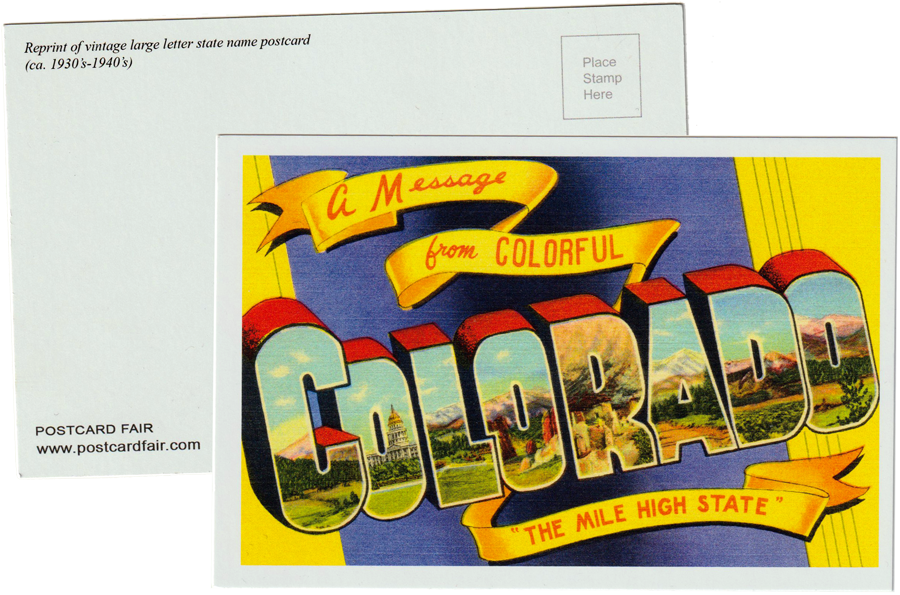
postcard / collection
Platforms
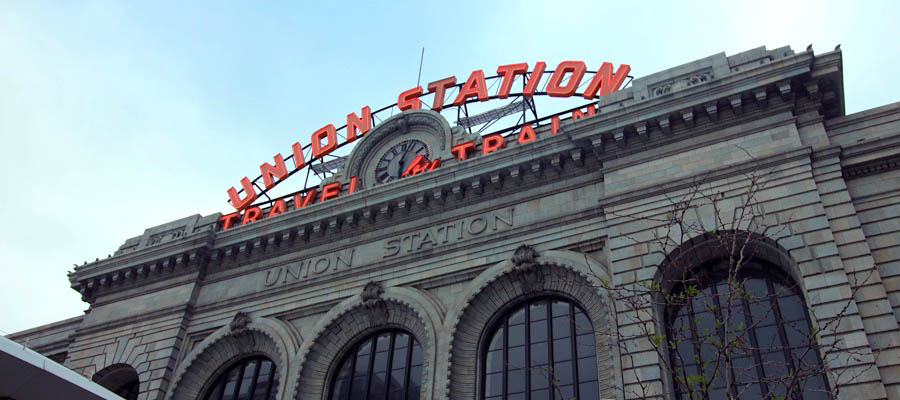
May 2023 / RWH
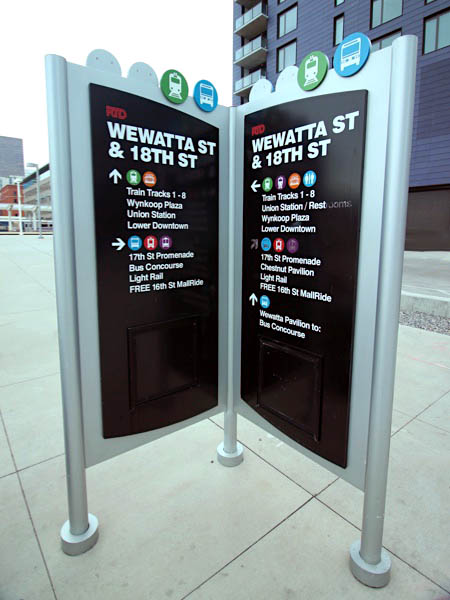
May 2023 / RWH
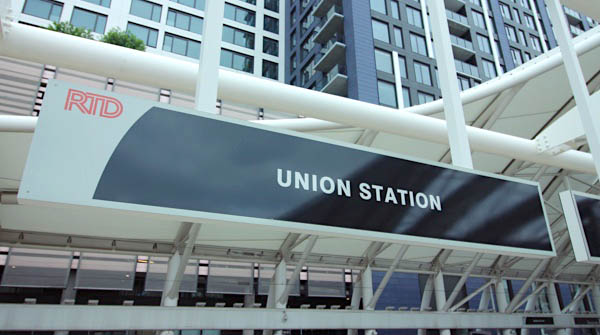
May 2023 / RWH
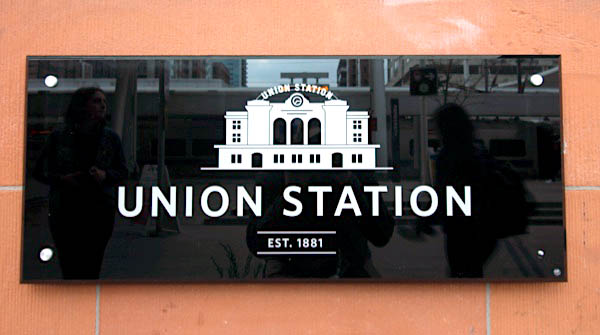
May 2023 / RWH
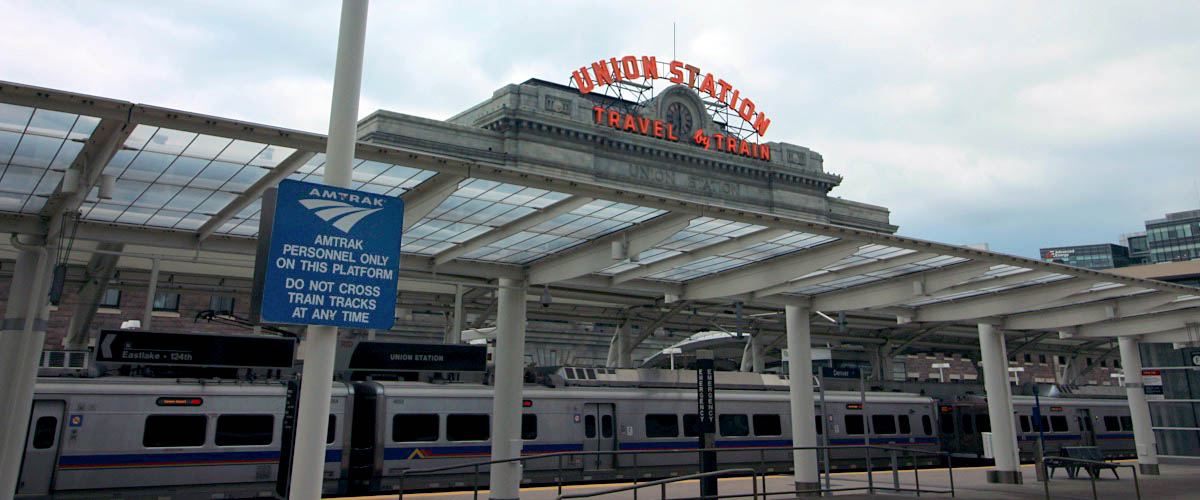
May 2023 / RWH
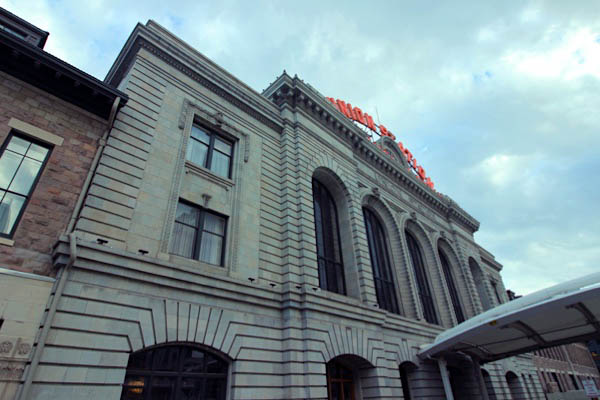
May 2023 / RWH
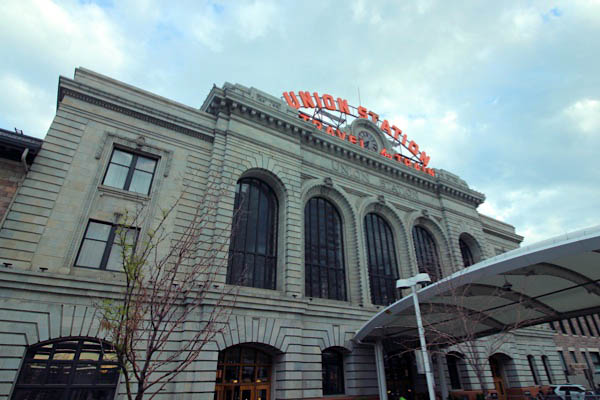
May 2023 / RWH
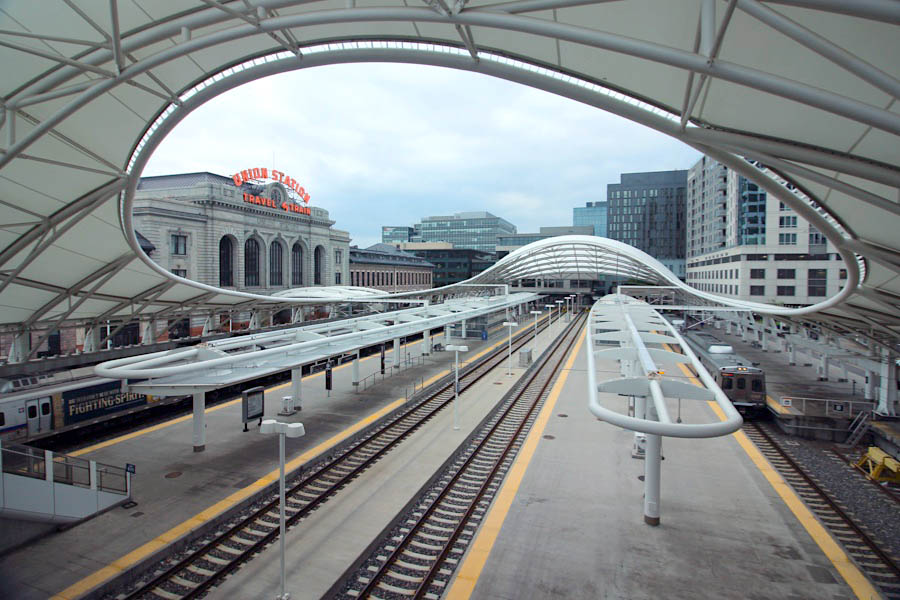
Denver, Co / May 2023 / RWH
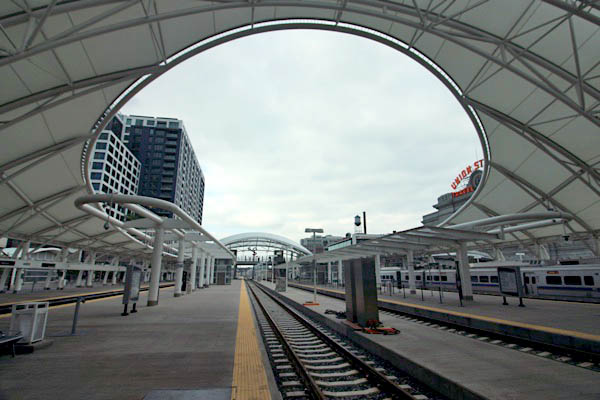
Denver, Co / May 2023 / RWH
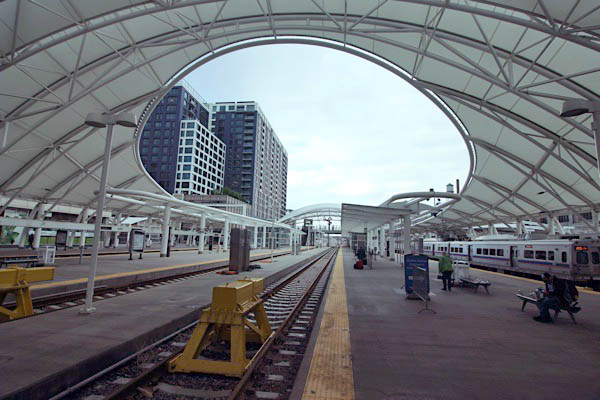
Denver, Co / May 2023 / RWH

Denver, Co / May 2023 / RWH

Denver, Co / May 2023 / RWH
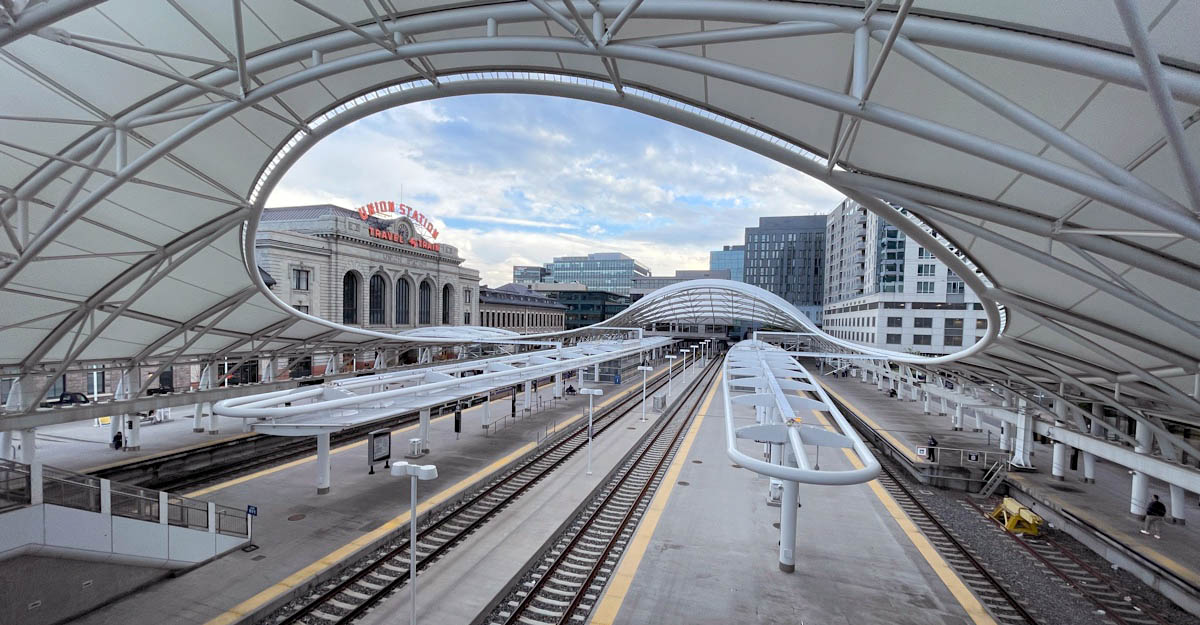
Denver, Co / May 2023 / RWH
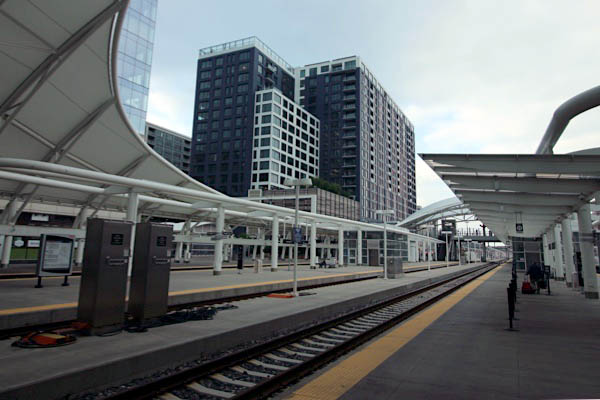
Denver, Co / May 2023 / RWH
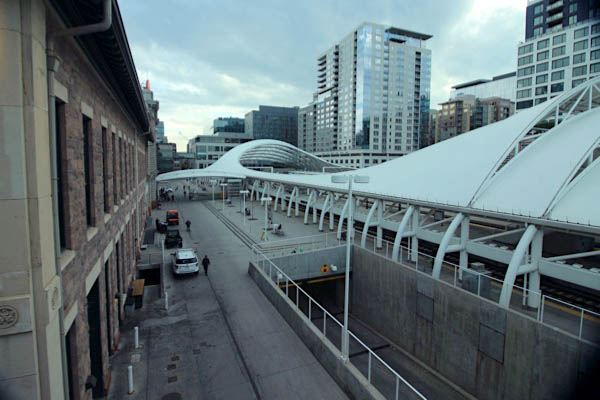
Denver, Co / May 2023 / RWH
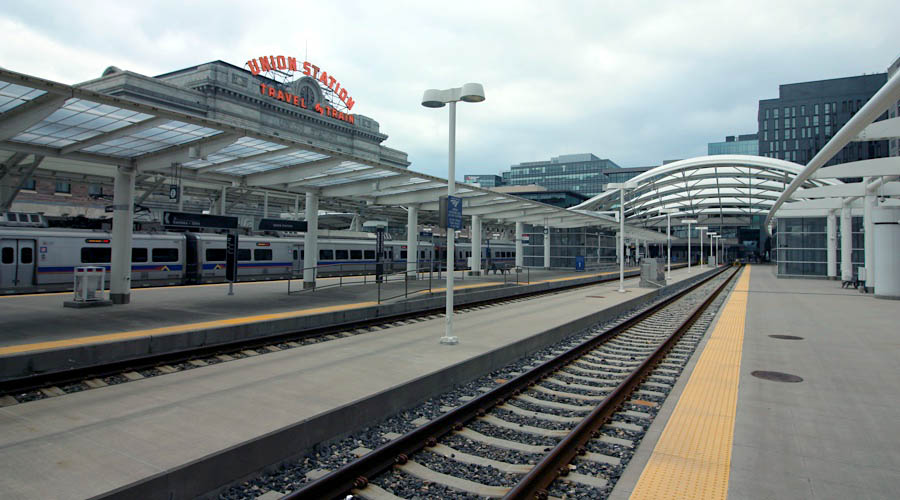
Denver, Co / May 2023 / RWH
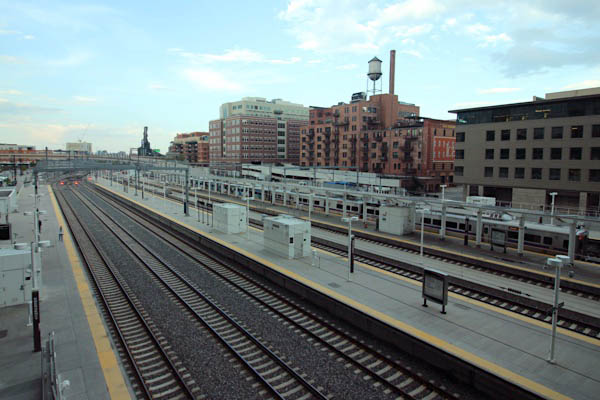
Denver, Co / May 2023 / RWH
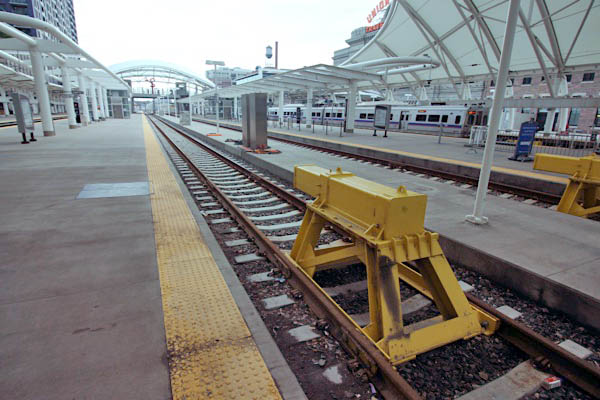
May 2023 / RWH
Commuter rail service at the new train hall began in April 2016 with the opening of the A Line, offering a long-awaited connection to Denver International Airport, running every 15 minutes during peak hours with a travel time of approximately 37 minutes. Service between Denver and Westminster began in July 2016 on the first segment of the B Line, which runs every 30 minutes during peak hours. The travel time between the two stations is approximately 11 minutes. Service to Wheat Ridge on the G Line began in April 2019, with an end-to-end travel time of 27 minutes. Service to Thornton on the N Line started in September 2020, with an end-to-end runtime of 29 minutes.

Denver, Co / May 2023 / RWH

Denver, Co / May 2023 / RWH

Denver, Co / May 2023 / RWH
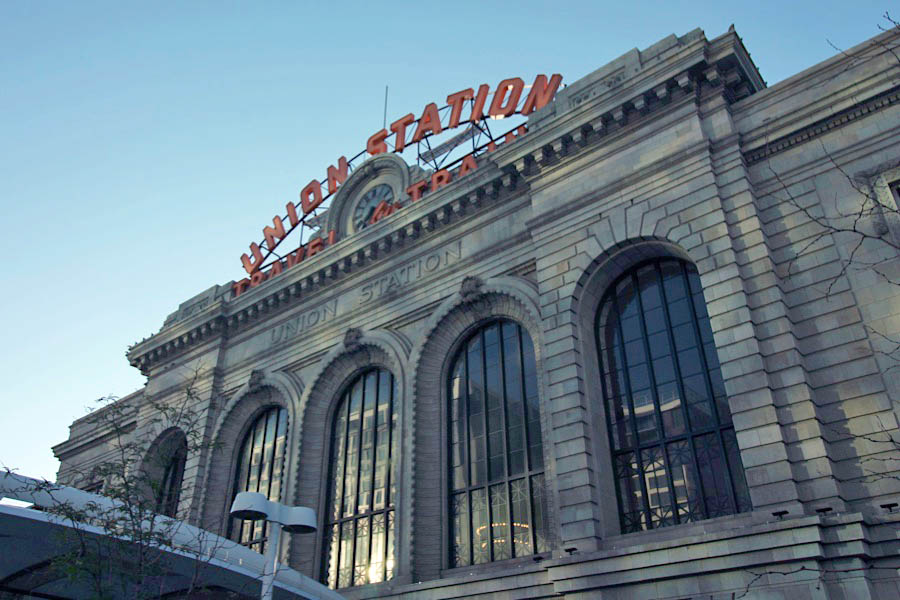
Denver, Co / Sep 2023 / RWH

Sep 2023 / RWH

Sep 2023 / RWH

Sep 2023 / RWH

Sep 2023 / RWH
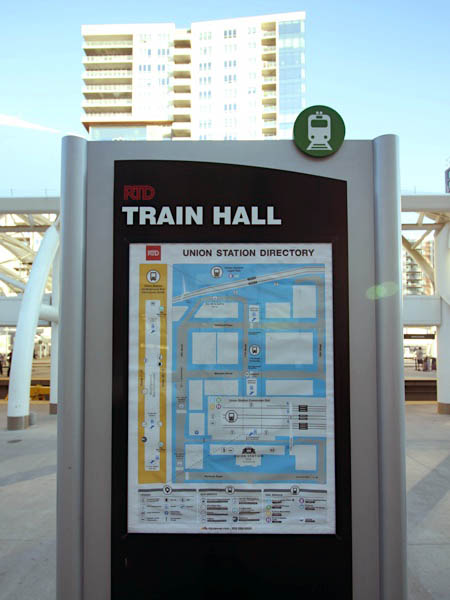
Sep 2023 / RWH
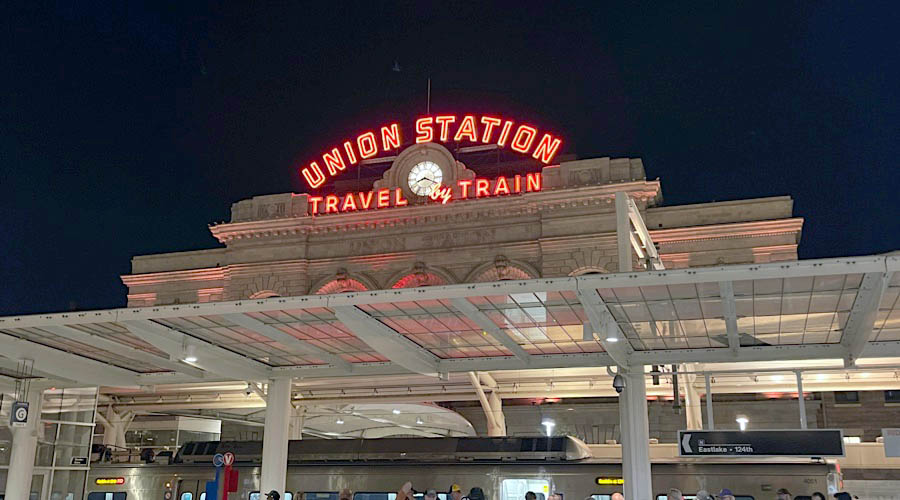
Denver, Co / Sep 2023 / RWH

Denver, Co / Sep 2023 / RWH

Denver, Co / Sep 2023 / RWH

Sep 2023 / RWH

Sep 2023 / RWH

Sep 2023 / RWH
 Lagniappe
Lagniappe
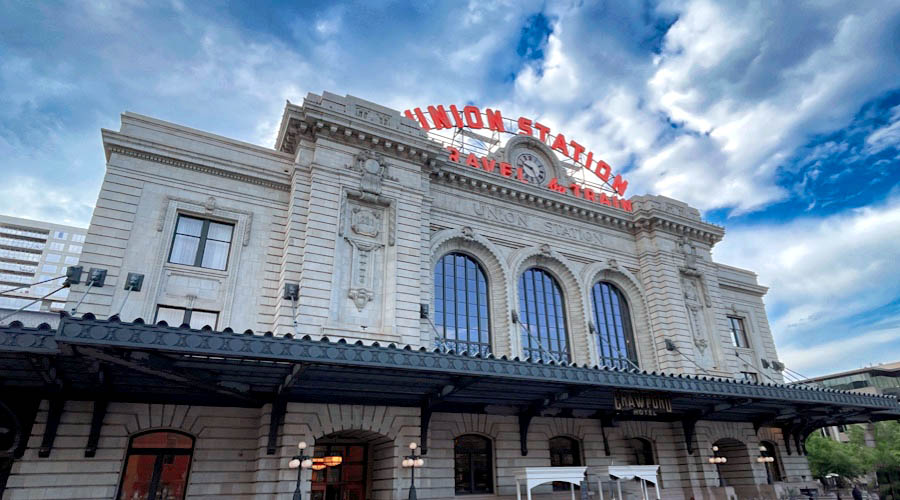
"Travel by Train"
Denver, Co / May 2023 / RWH
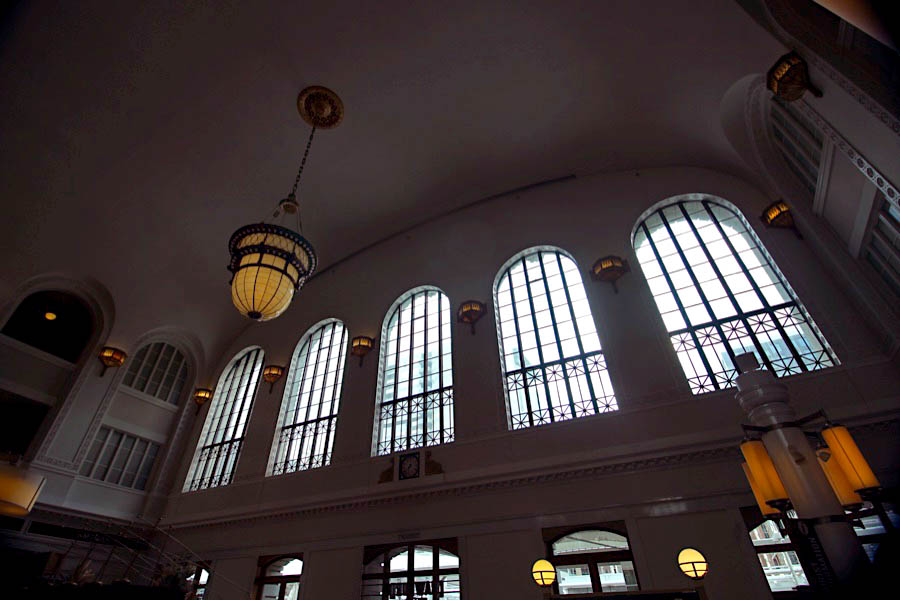
Pentateuch Hall
Denver, Co / May 2023 / RWH
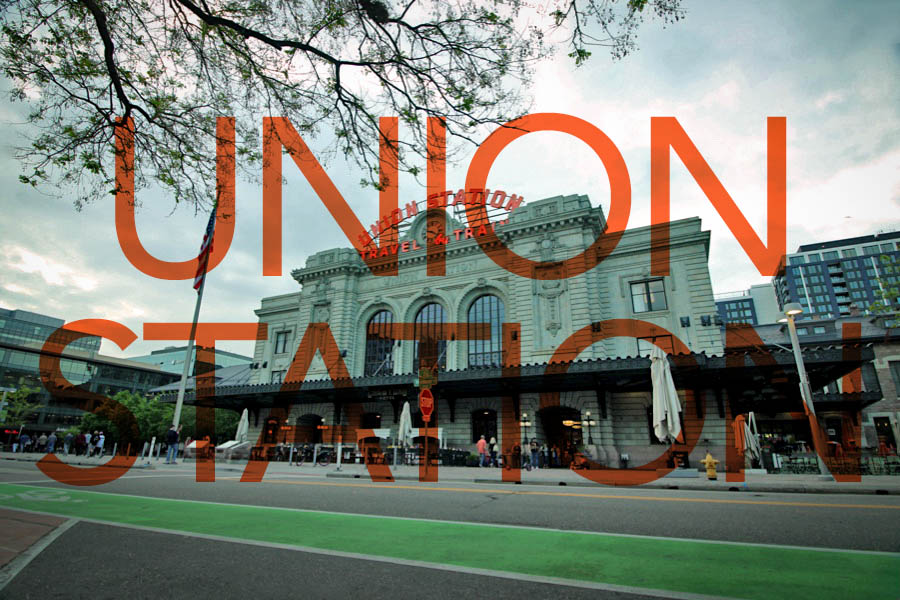
United We Stand
Denver, Co / May 2023 / RWH
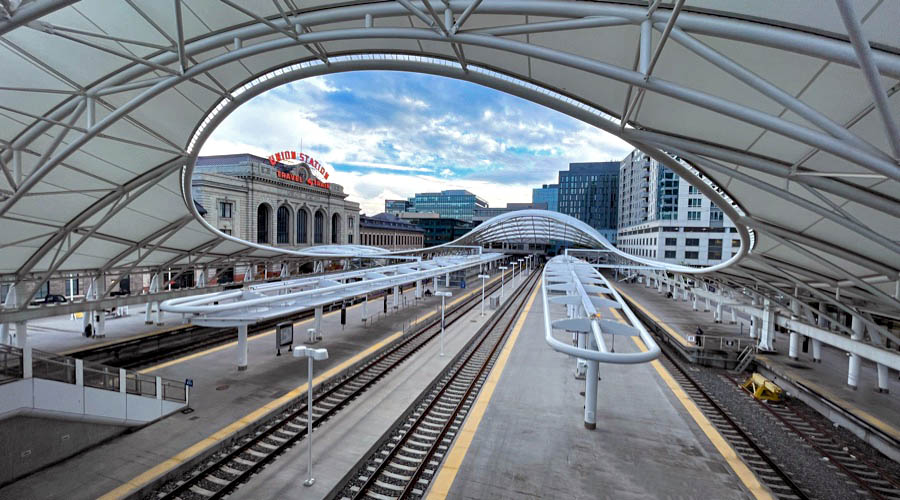
Space Station Union
Denver, Co / May 2023 / RWH
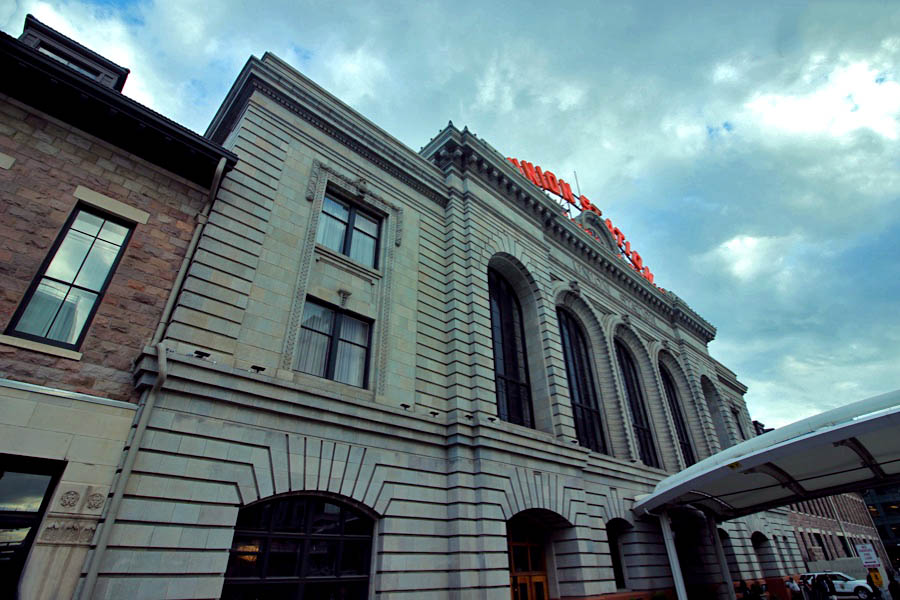
Angles and Institutions
Denver, Co / May 2023 / RWH

America's Railroad
Denver, Co / May 2023 / RWH

To the Rockies
image of Durham print on wall / artwork RWH

 Extra Board
Extra Board




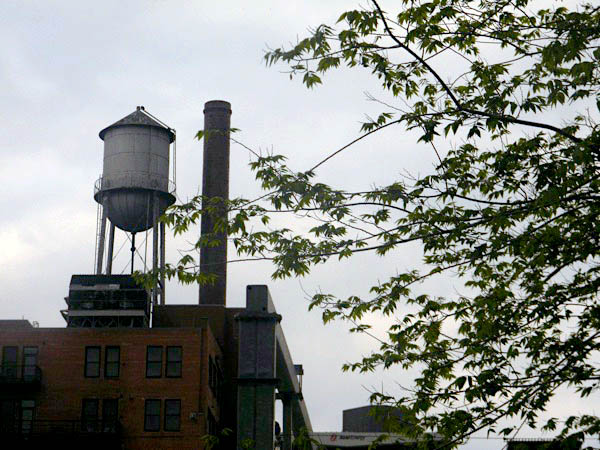
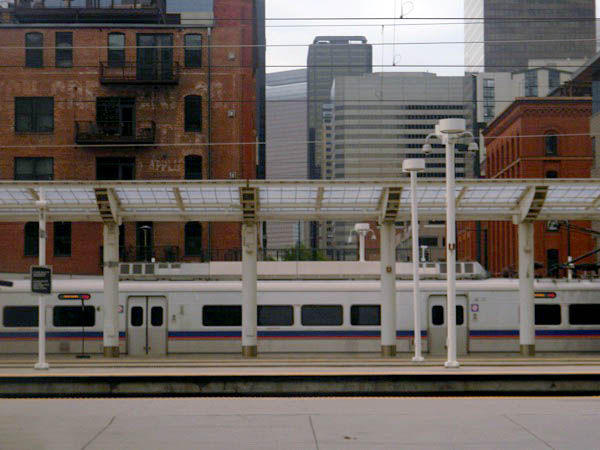
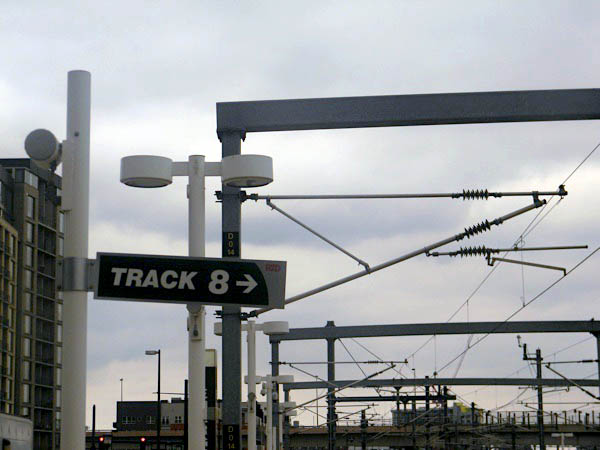
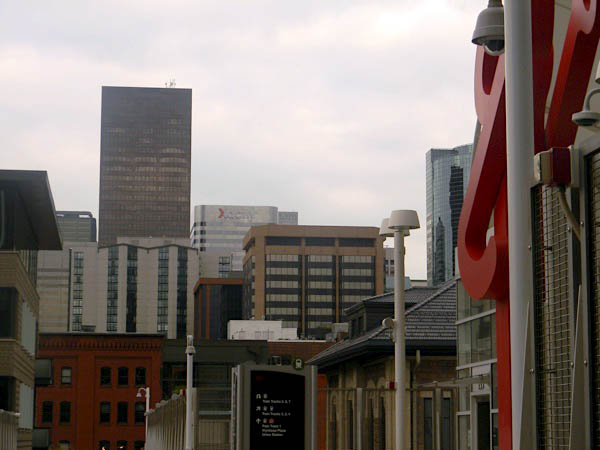
Denver, Co / May 2023 / ETH
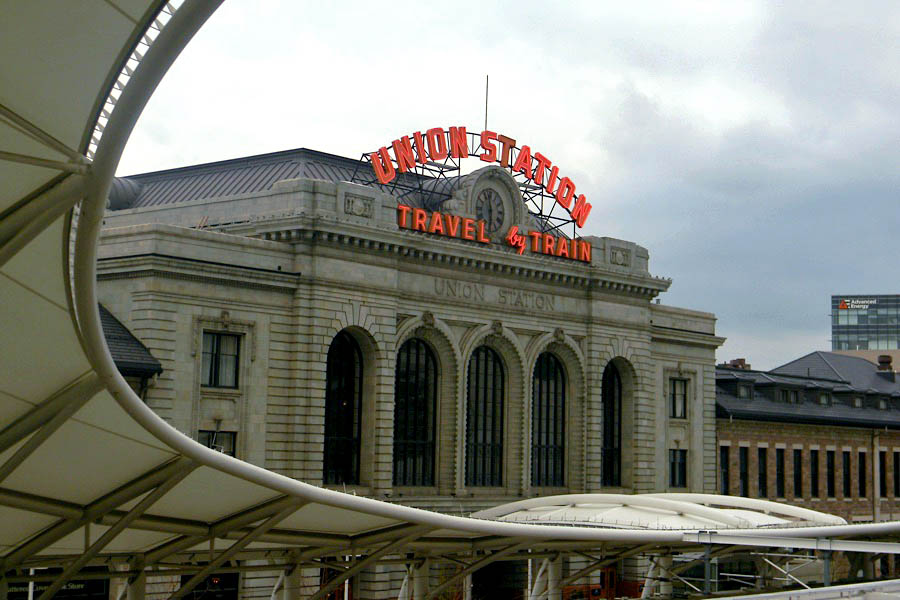
Denver, Co / May 2023 / ETH
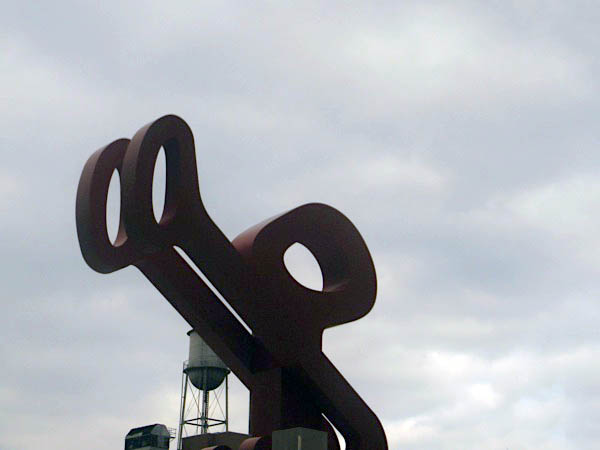
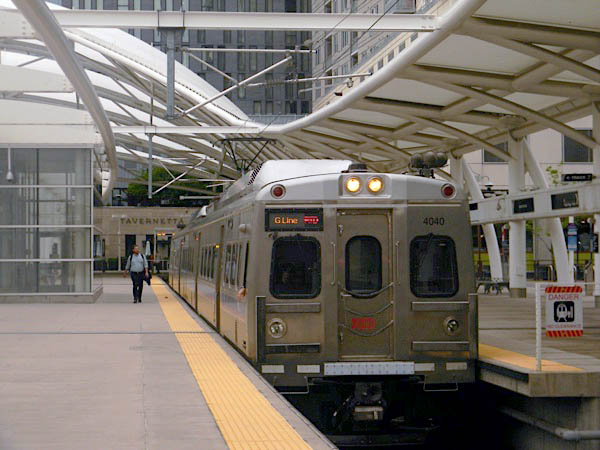

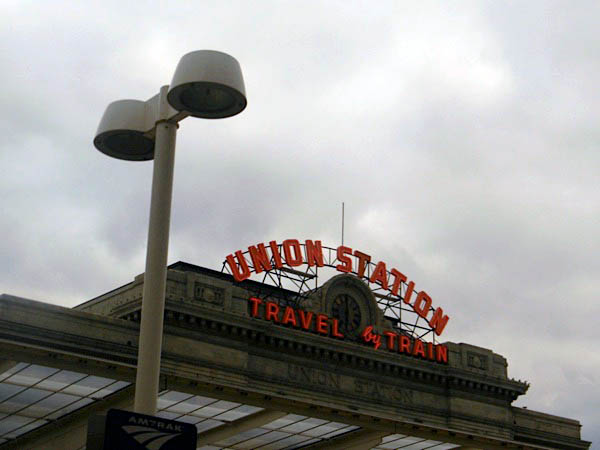
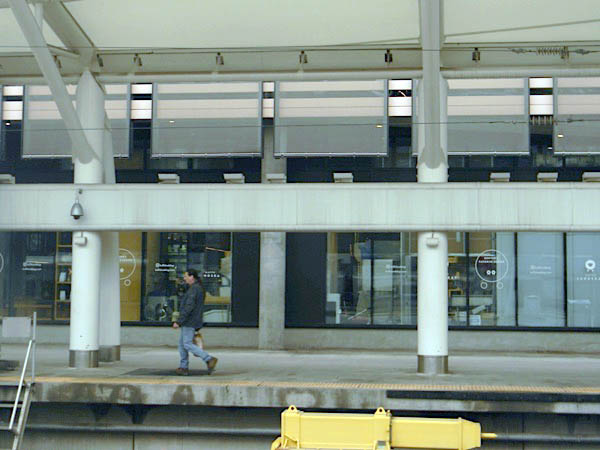
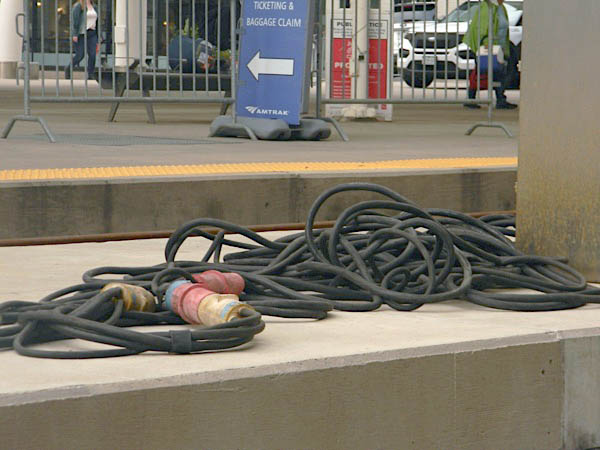
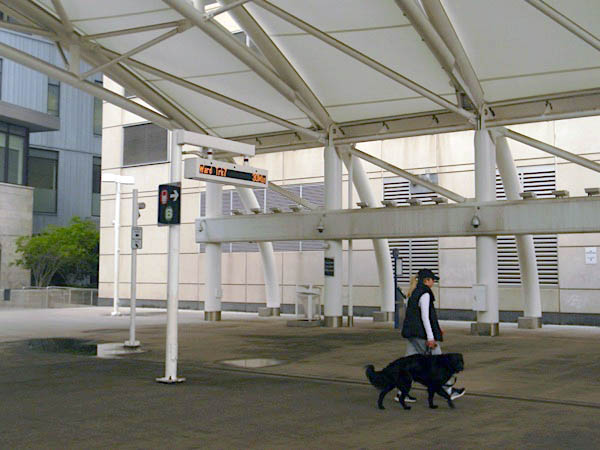


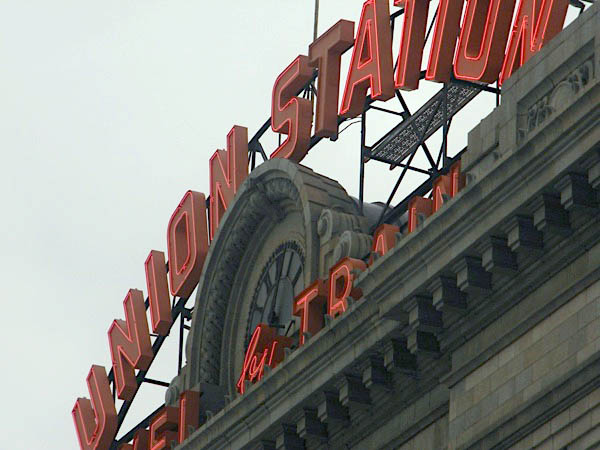
Denver, Co / May 2023 / ETH
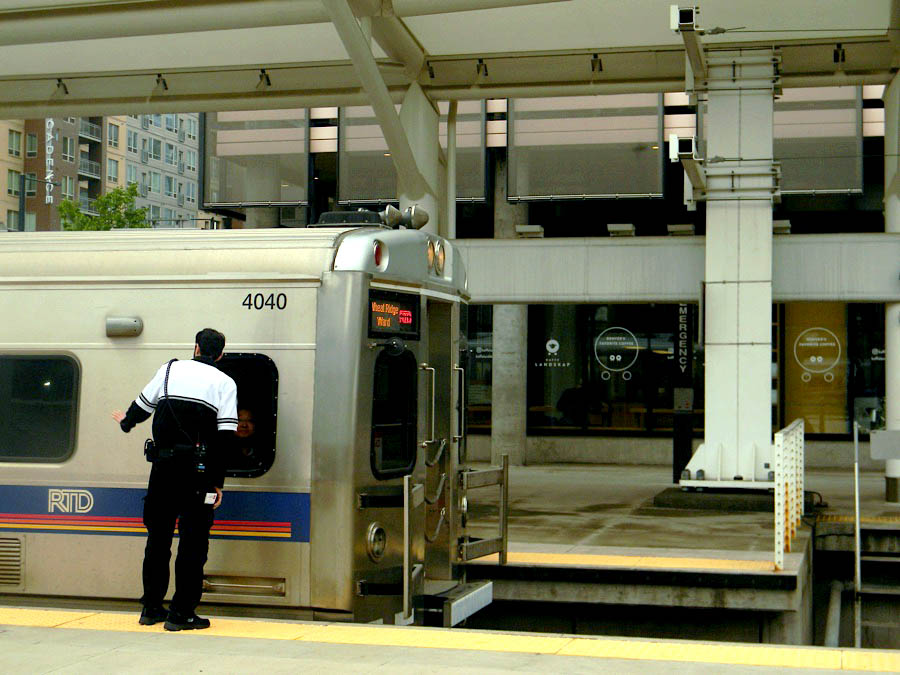
Denver, Co / May 2023 / ETH
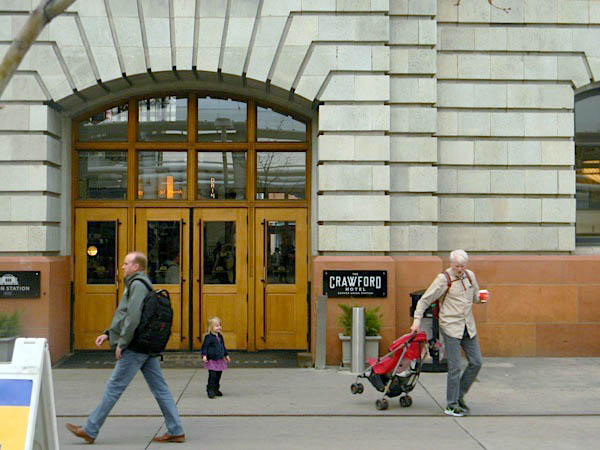
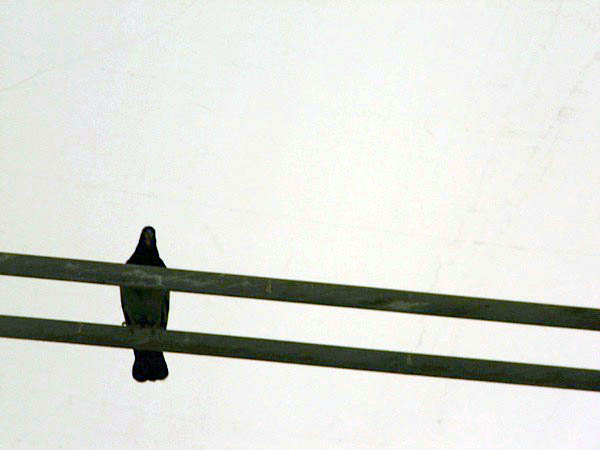
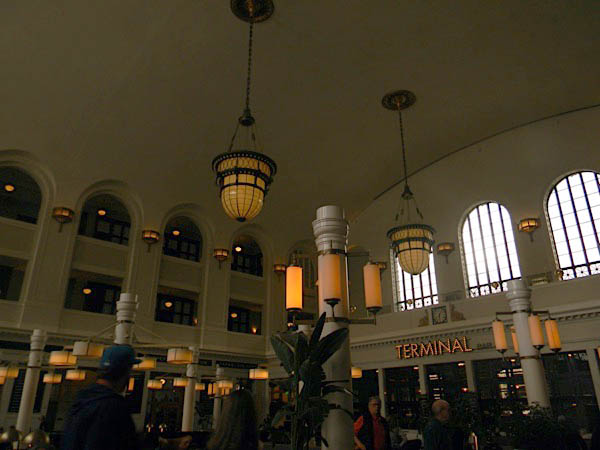
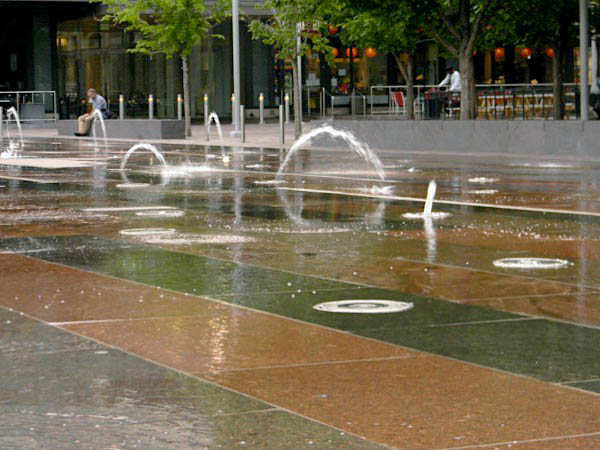
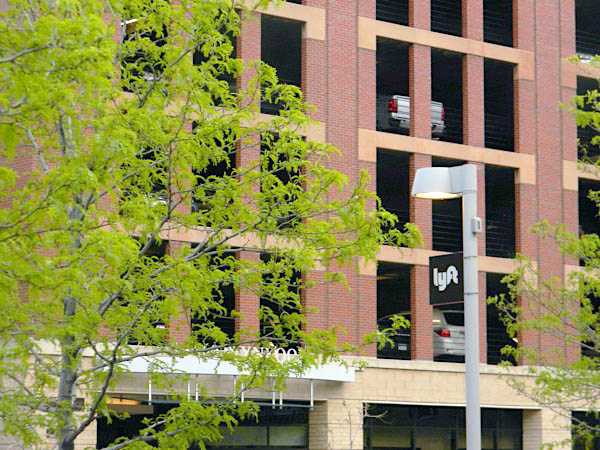

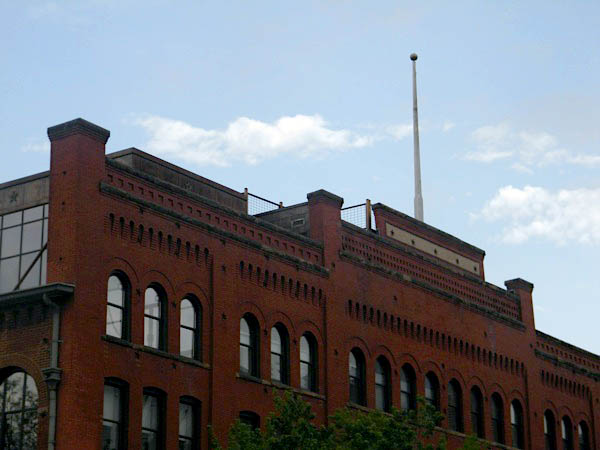
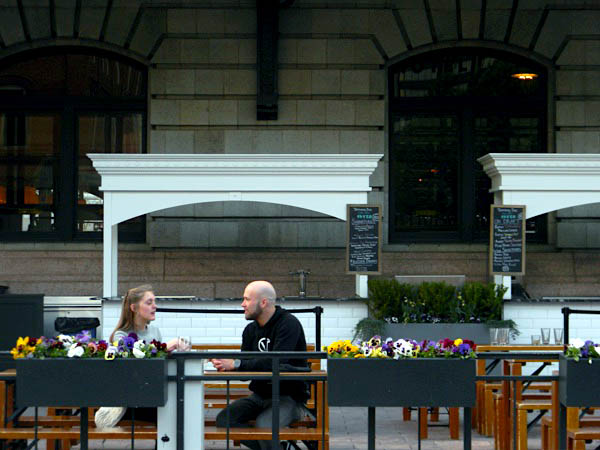
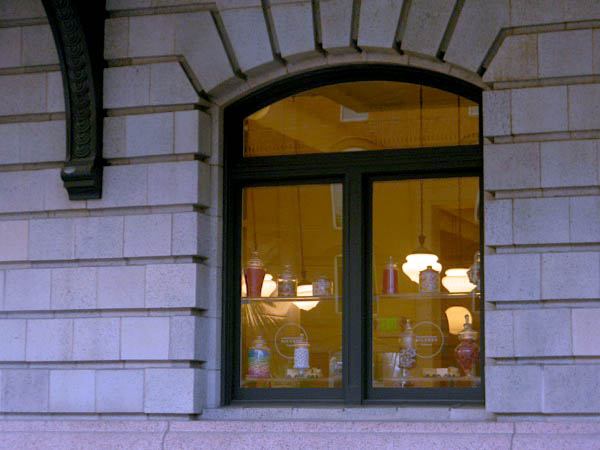

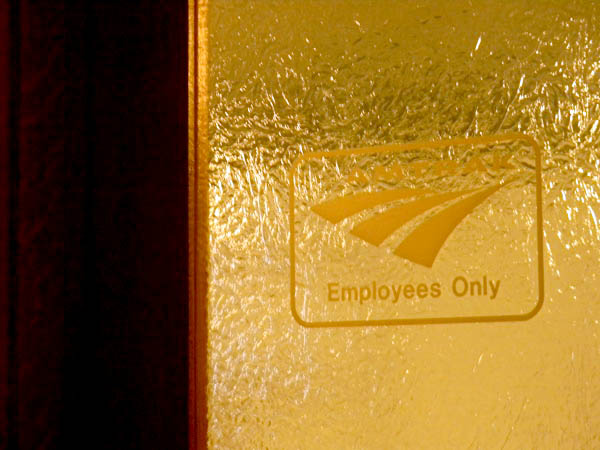
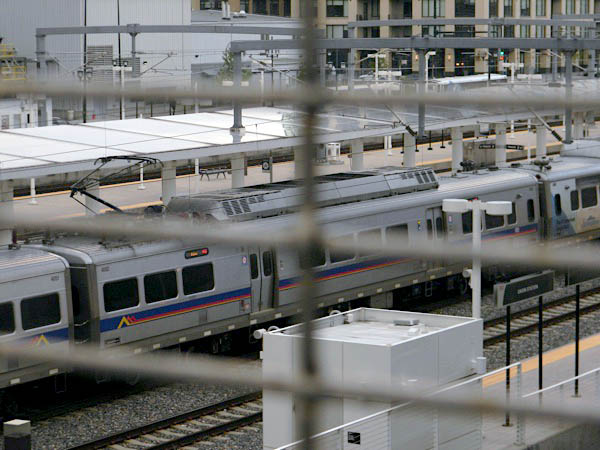
Denver, Co / May 2023 / ETH
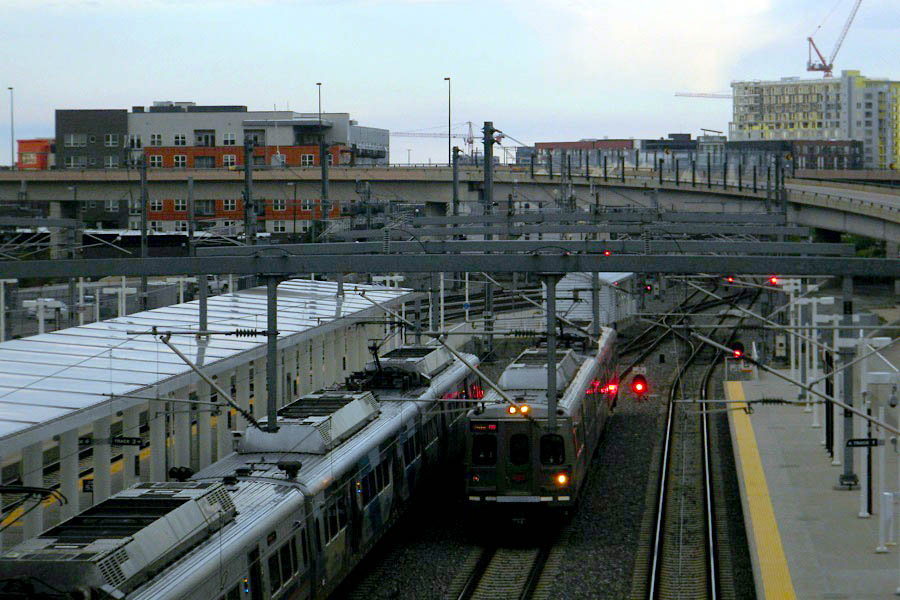
Denver, Co / May 2023 / ETH
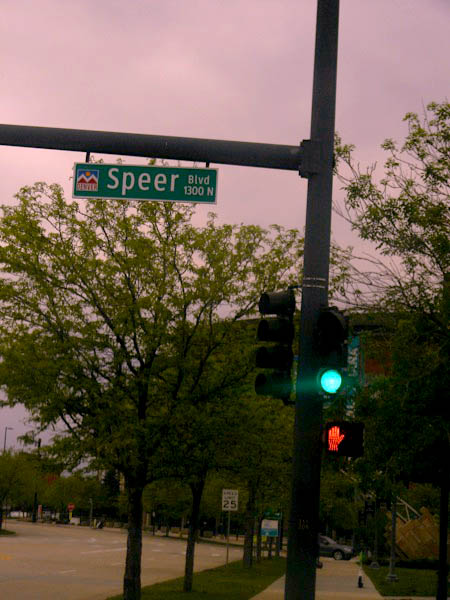


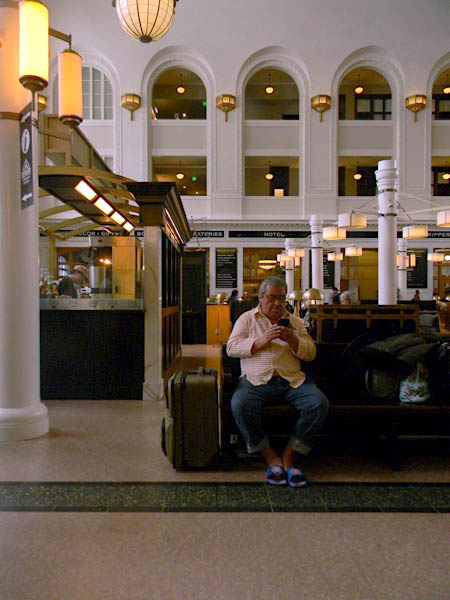
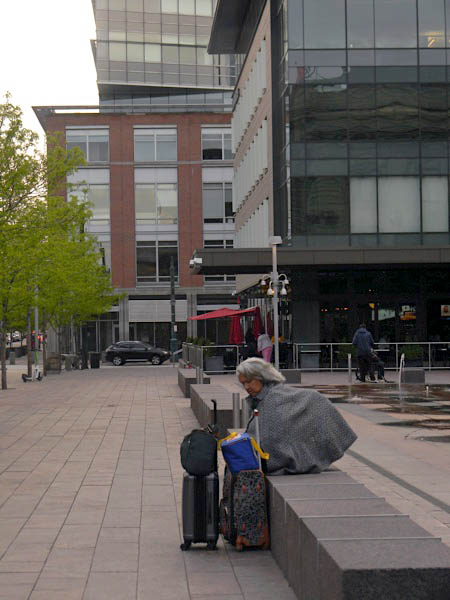
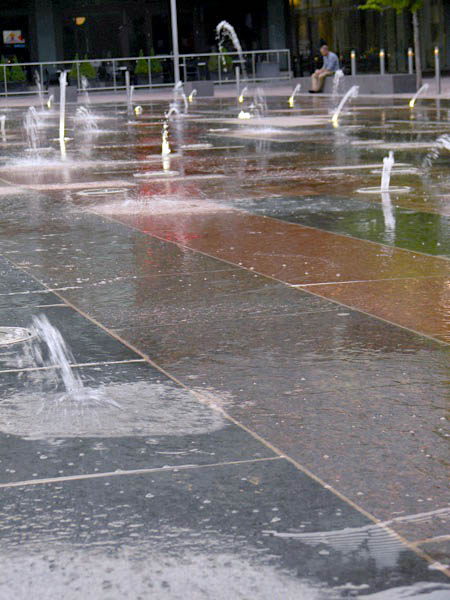
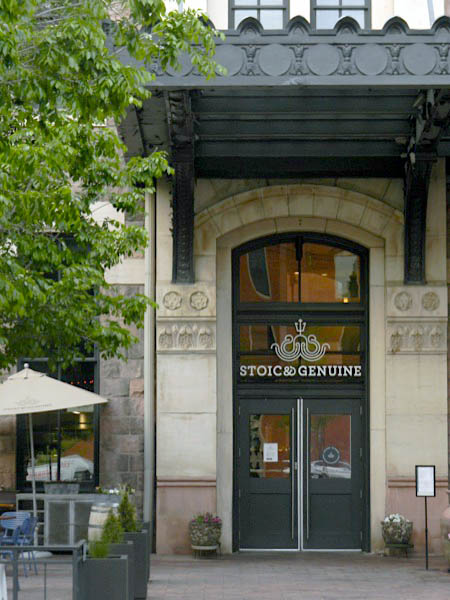
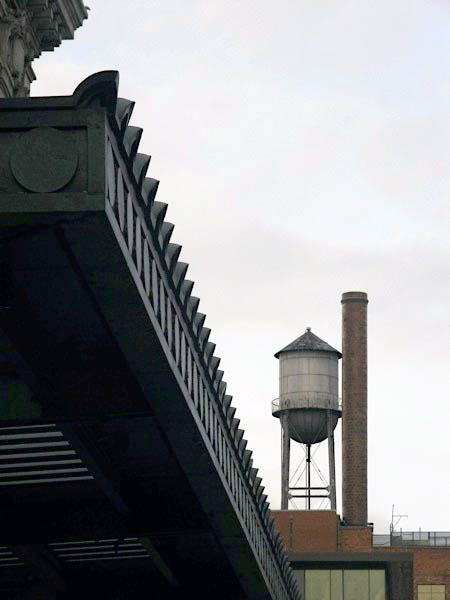
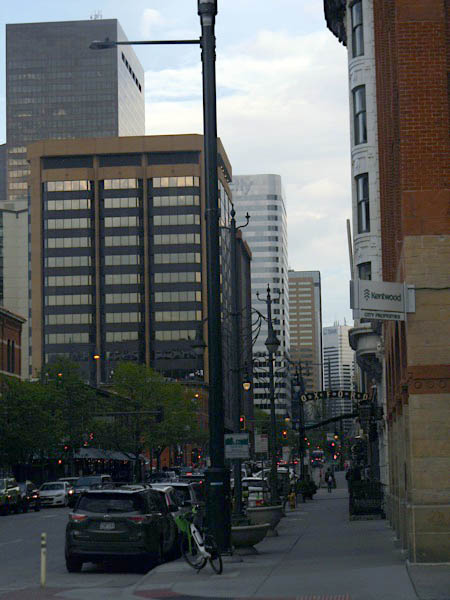

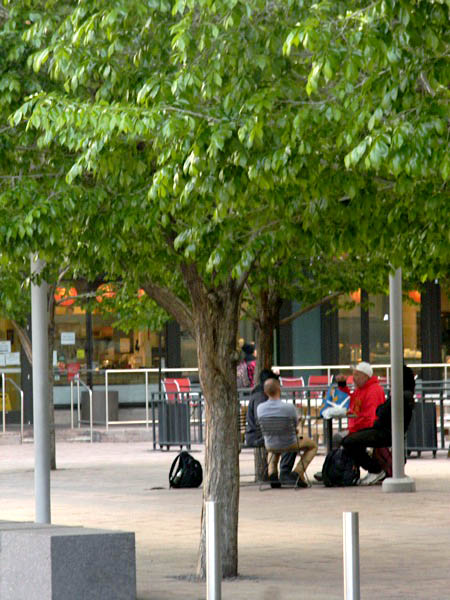
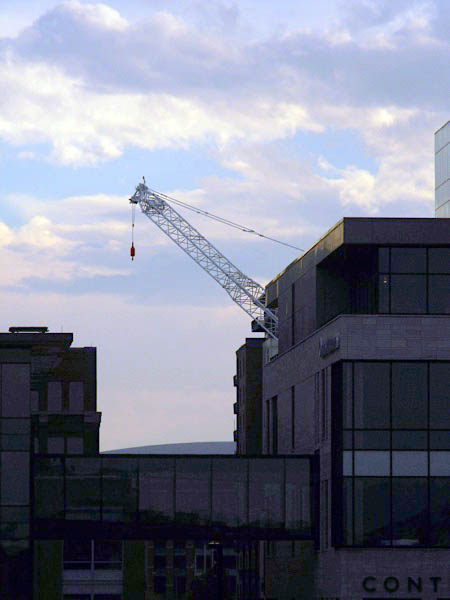
Denver, Co / May 2023 / ETH

See also Ella's complete Extra Board image collection in Lagniappe
 Snapshots
Snapshots
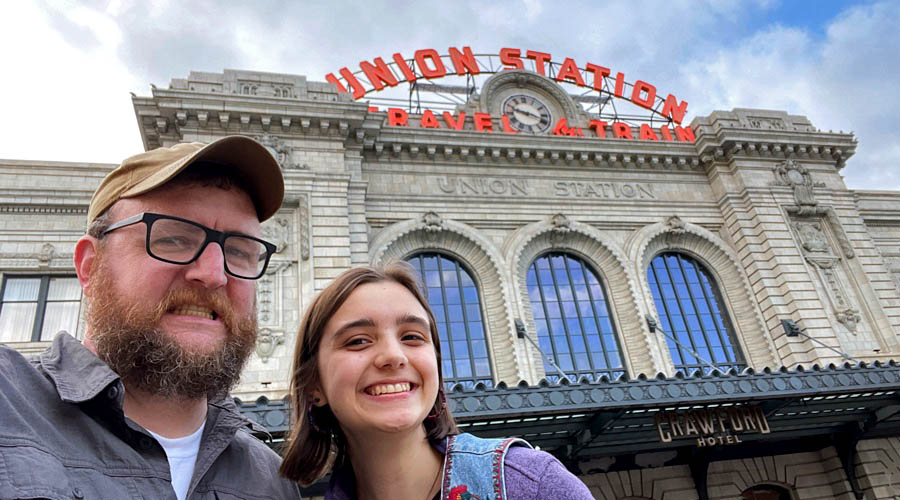
Denver, Co / May 2023 / RWH
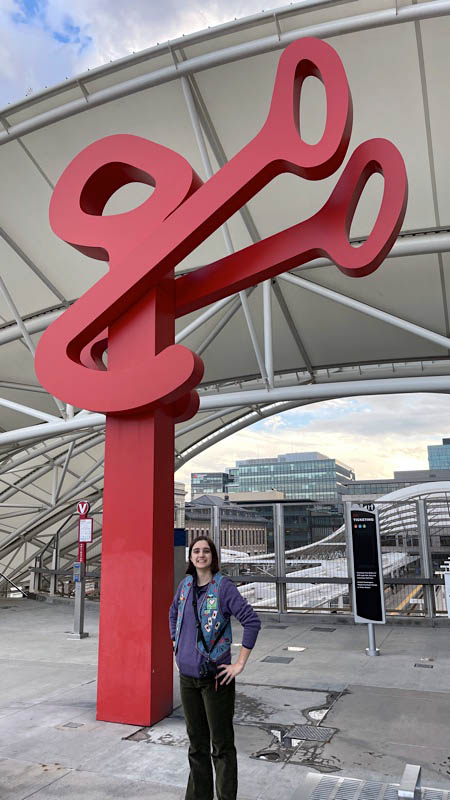
May 2023 / RWH
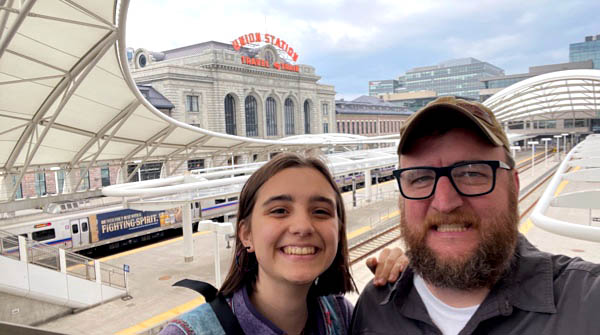
Denver, Co / May 2023 / RWH
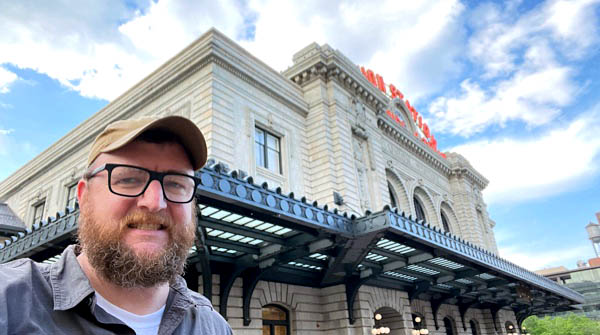
Denver, Co / May 2023 / RWH
Links / Sources
- Denver Union Station website
- Wikipedia article for Union Station
- Great American Stations Denver page
- USA Rail Guide Denver page
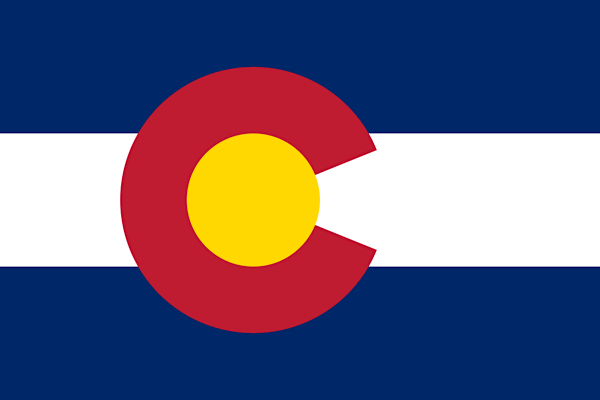
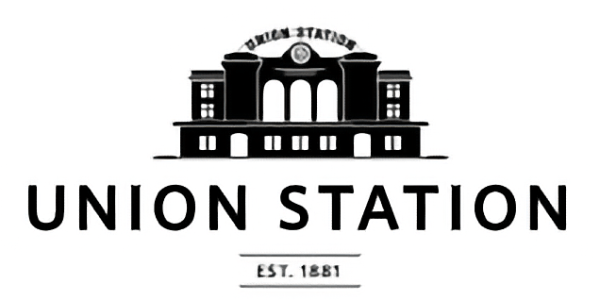 Amtrak returned to historic Denver Union Station in time for the evening arrival of the eastbound California Zephyr on Friday, February 28, 2014. Three years earlier, Amtrak moved to a nearby temporary facility to accommodate the renovation of Union Station, excavation of an underground bus concourse and construction of a new Train Hall containing tracks and platforms to be used by Amtrak and the future commuter rail system. The Train Hall, just west of the historic building, features a soaring white fabric roof with curving forms; lighted from within at night, it becomes a glowing Lower Downtown landmark.
Amtrak returned to historic Denver Union Station in time for the evening arrival of the eastbound California Zephyr on Friday, February 28, 2014. Three years earlier, Amtrak moved to a nearby temporary facility to accommodate the renovation of Union Station, excavation of an underground bus concourse and construction of a new Train Hall containing tracks and platforms to be used by Amtrak and the future commuter rail system. The Train Hall, just west of the historic building, features a soaring white fabric roof with curving forms; lighted from within at night, it becomes a glowing Lower Downtown landmark.
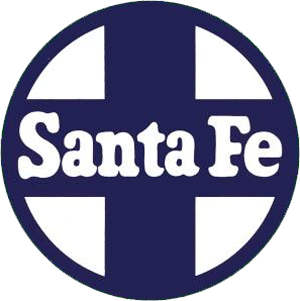
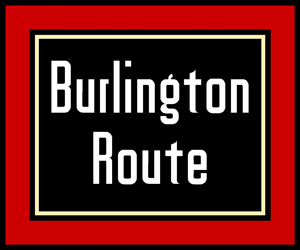
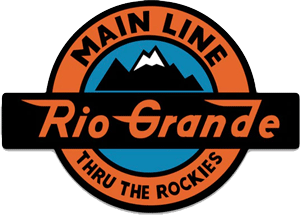
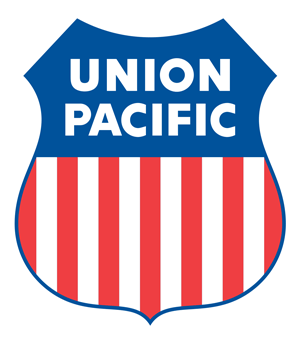
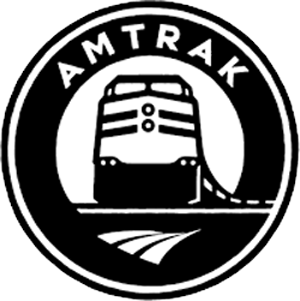
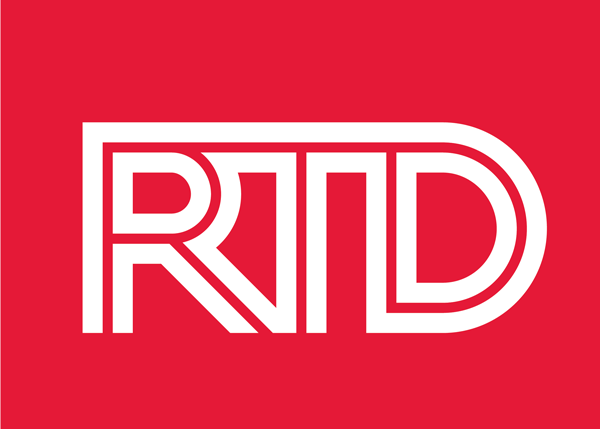 Commuter rail service at the new train hall began in April 2016 with the opening of the A Line, offering a long-awaited connection to Denver International Airport, running every 15 minutes during peak hours with a travel time of approximately 37 minutes. Service between Denver and Westminster began in July 2016 on the first segment of the B Line, which runs every 30 minutes during peak hours. The travel time between the two stations is approximately 11 minutes. Service to Wheat Ridge on the G Line began in April 2019, with an end-to-end travel time of 27 minutes. Service to Thornton on the N Line started in September 2020, with an end-to-end runtime of 29 minutes.
Commuter rail service at the new train hall began in April 2016 with the opening of the A Line, offering a long-awaited connection to Denver International Airport, running every 15 minutes during peak hours with a travel time of approximately 37 minutes. Service between Denver and Westminster began in July 2016 on the first segment of the B Line, which runs every 30 minutes during peak hours. The travel time between the two stations is approximately 11 minutes. Service to Wheat Ridge on the G Line began in April 2019, with an end-to-end travel time of 27 minutes. Service to Thornton on the N Line started in September 2020, with an end-to-end runtime of 29 minutes.



